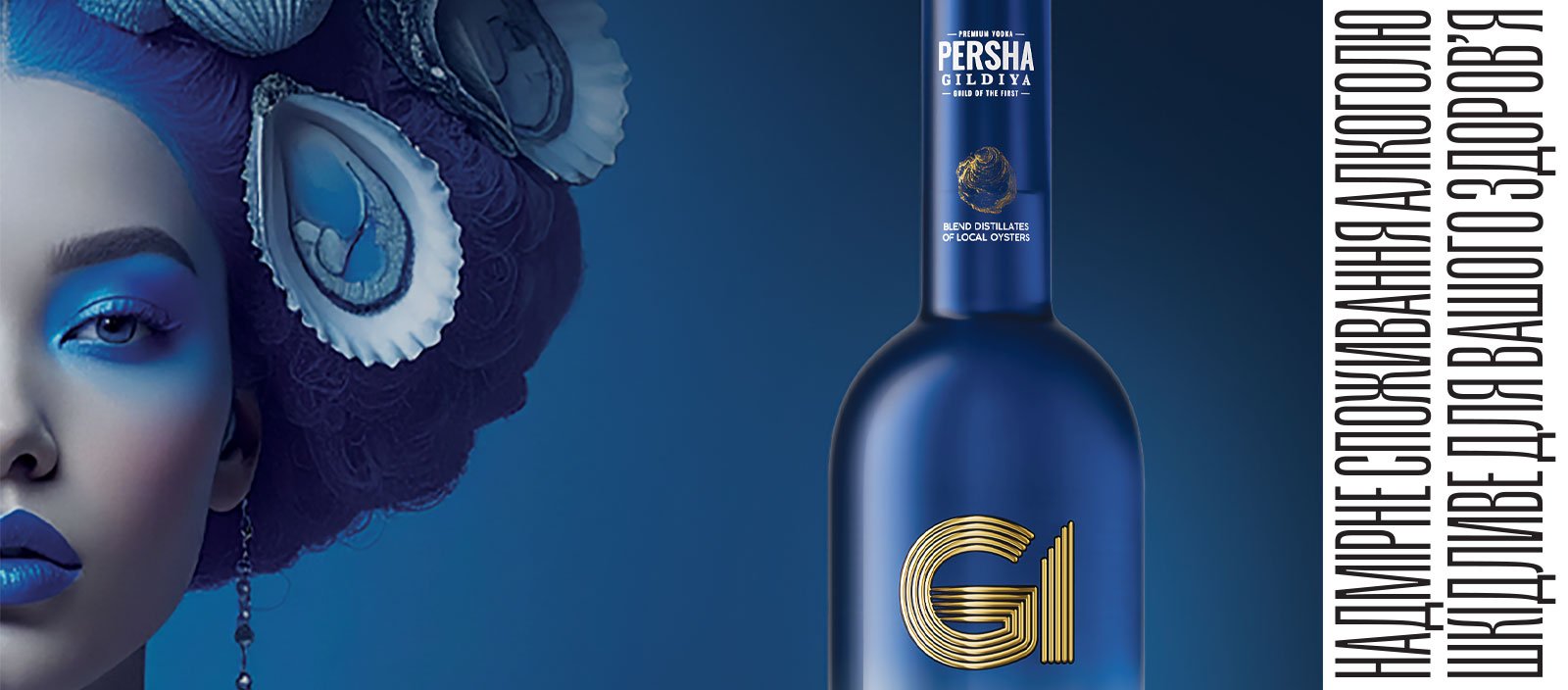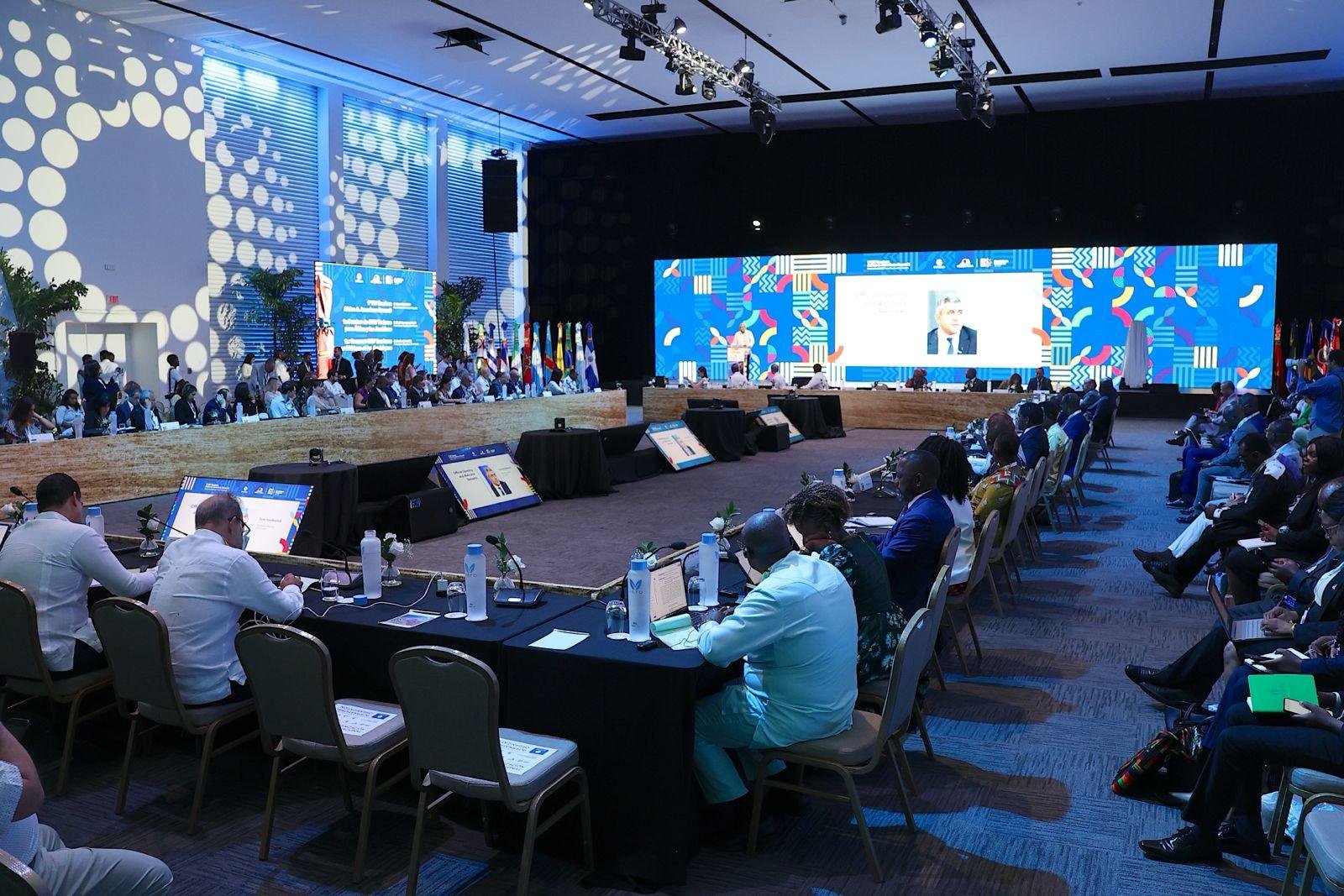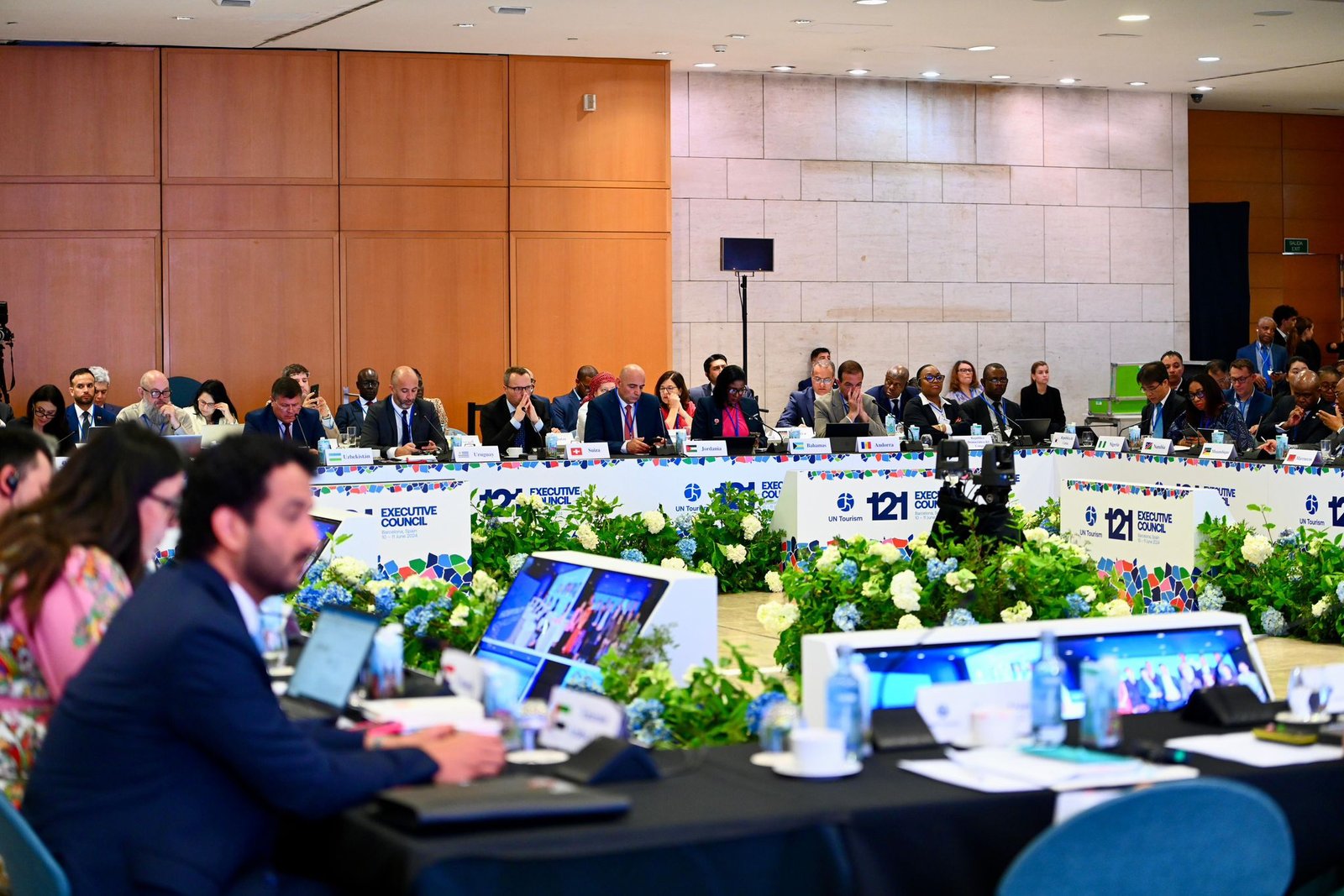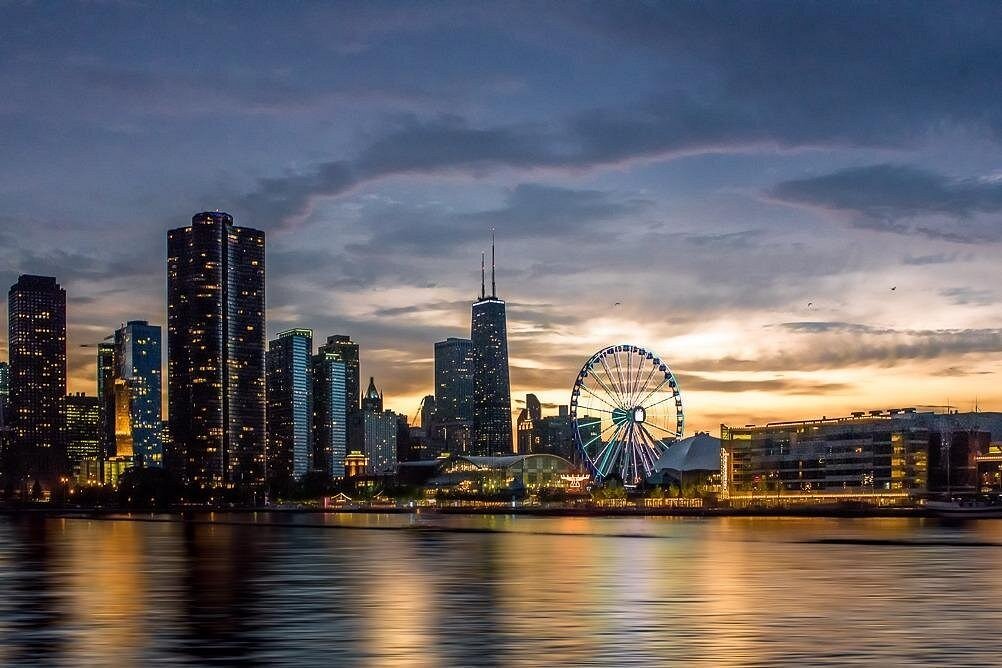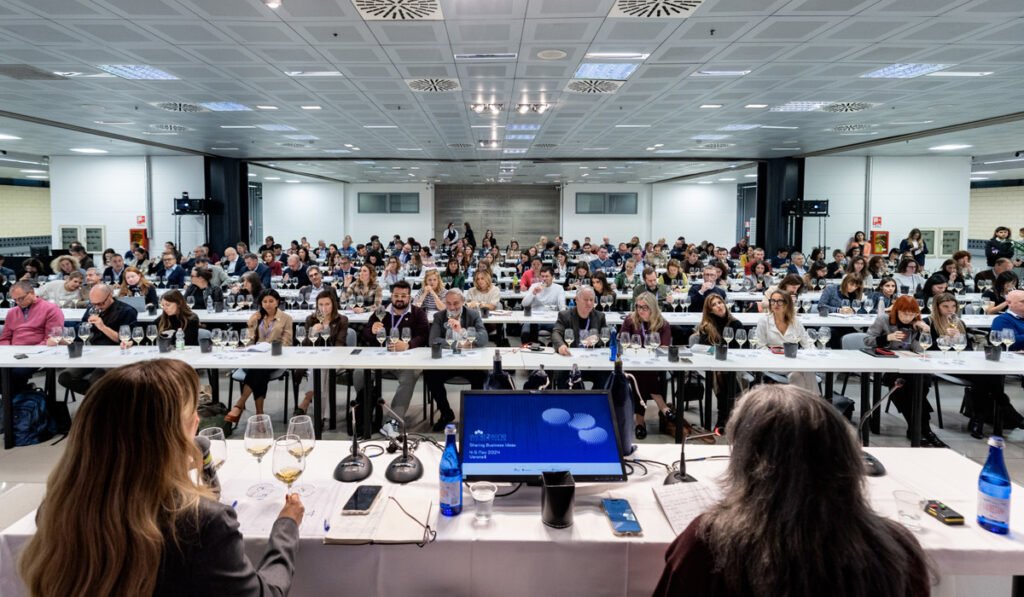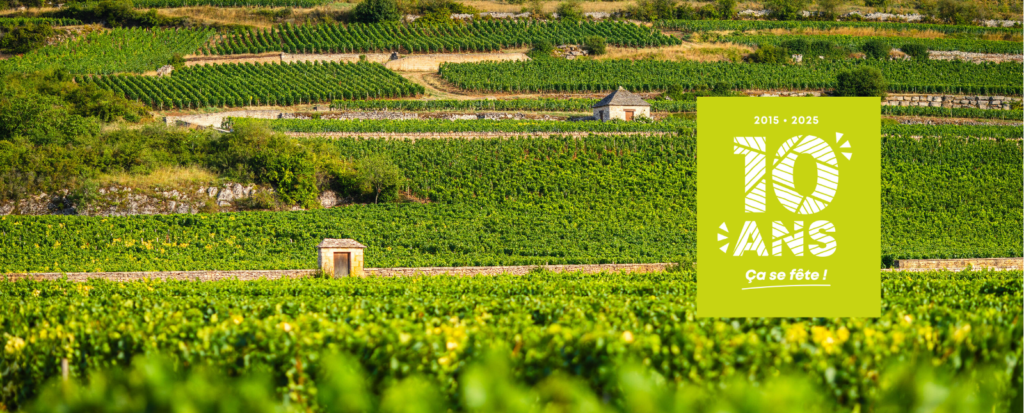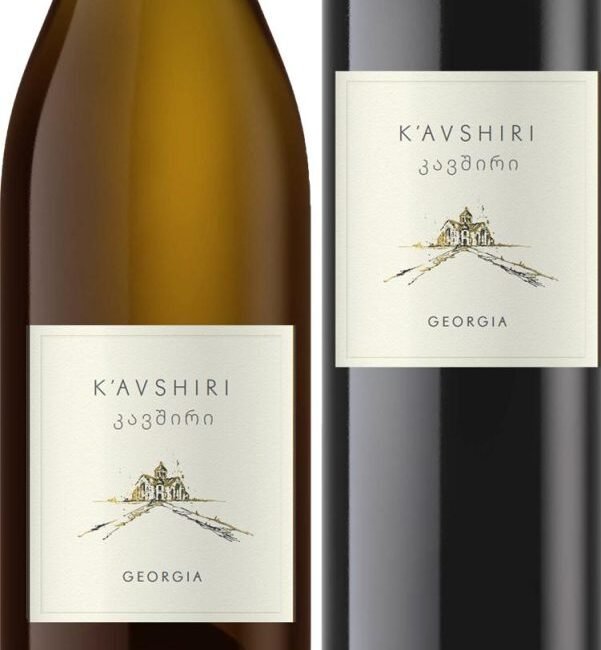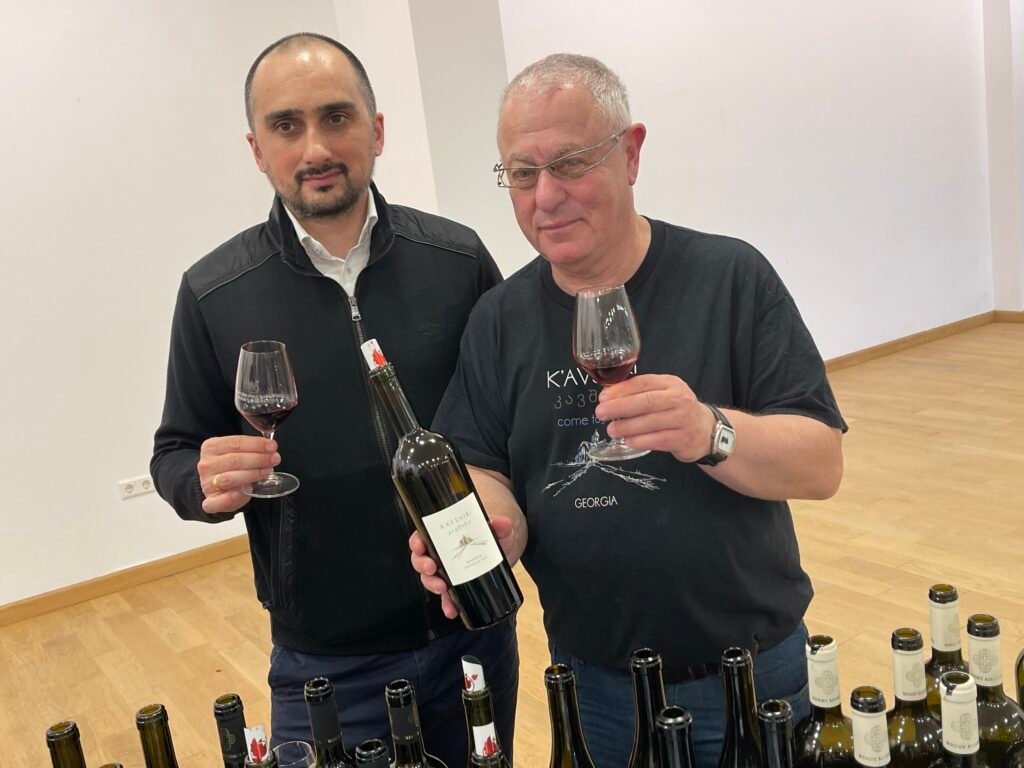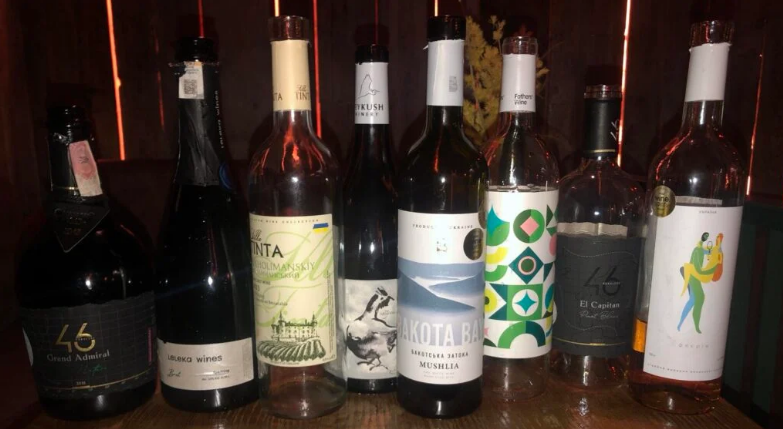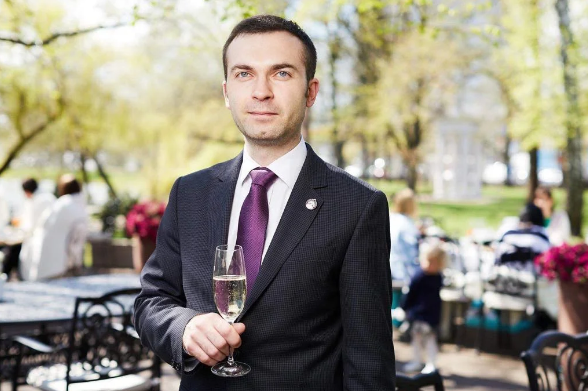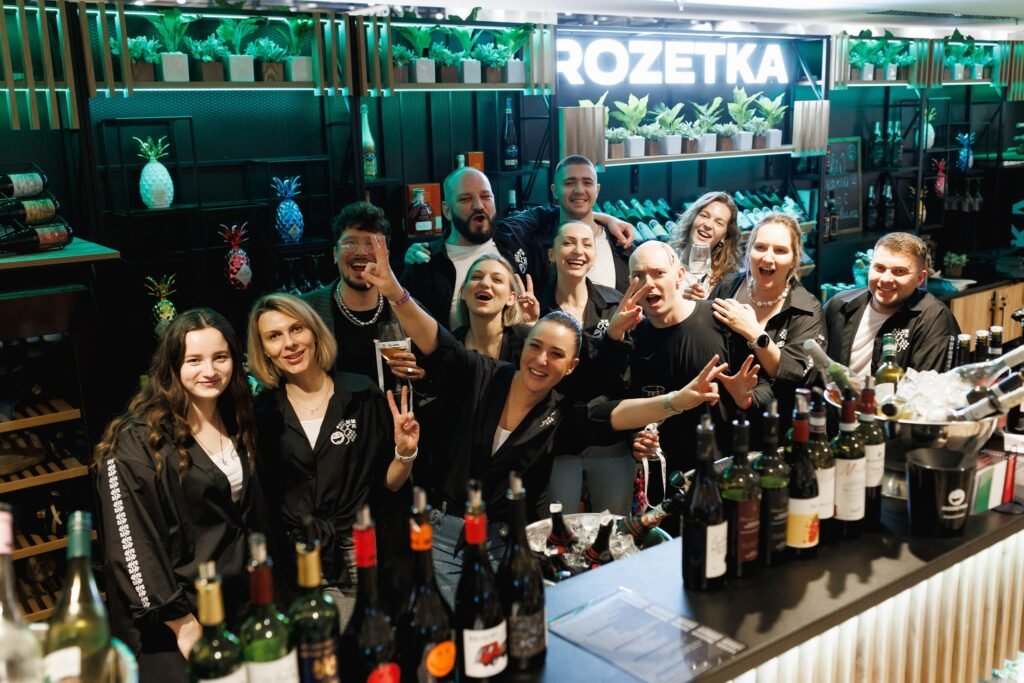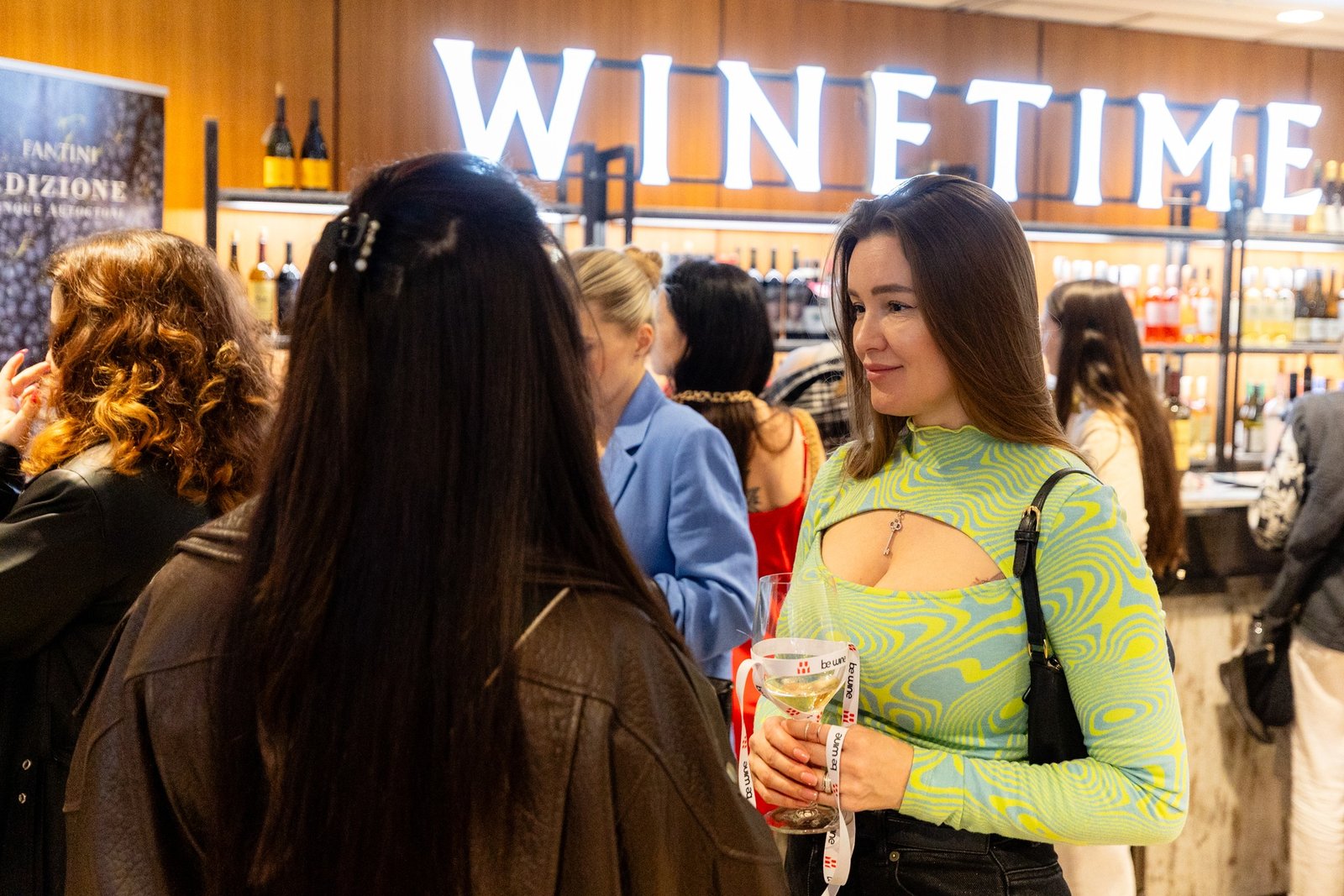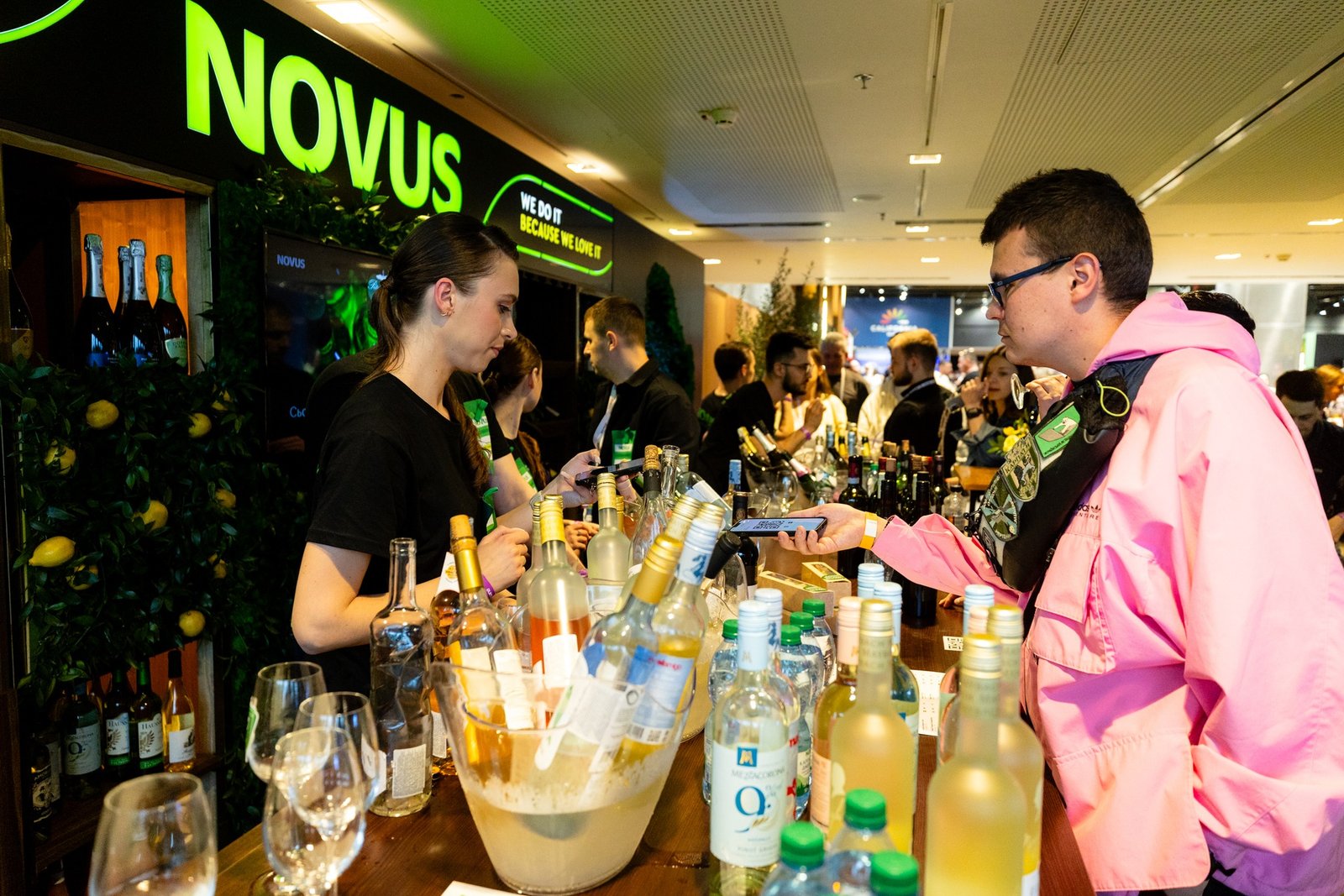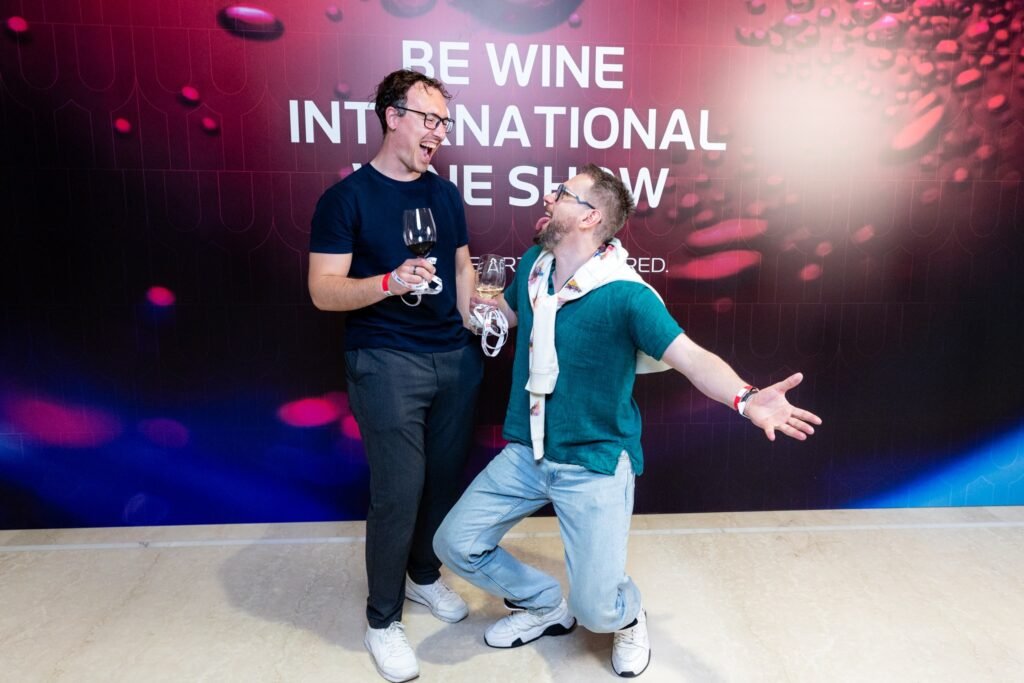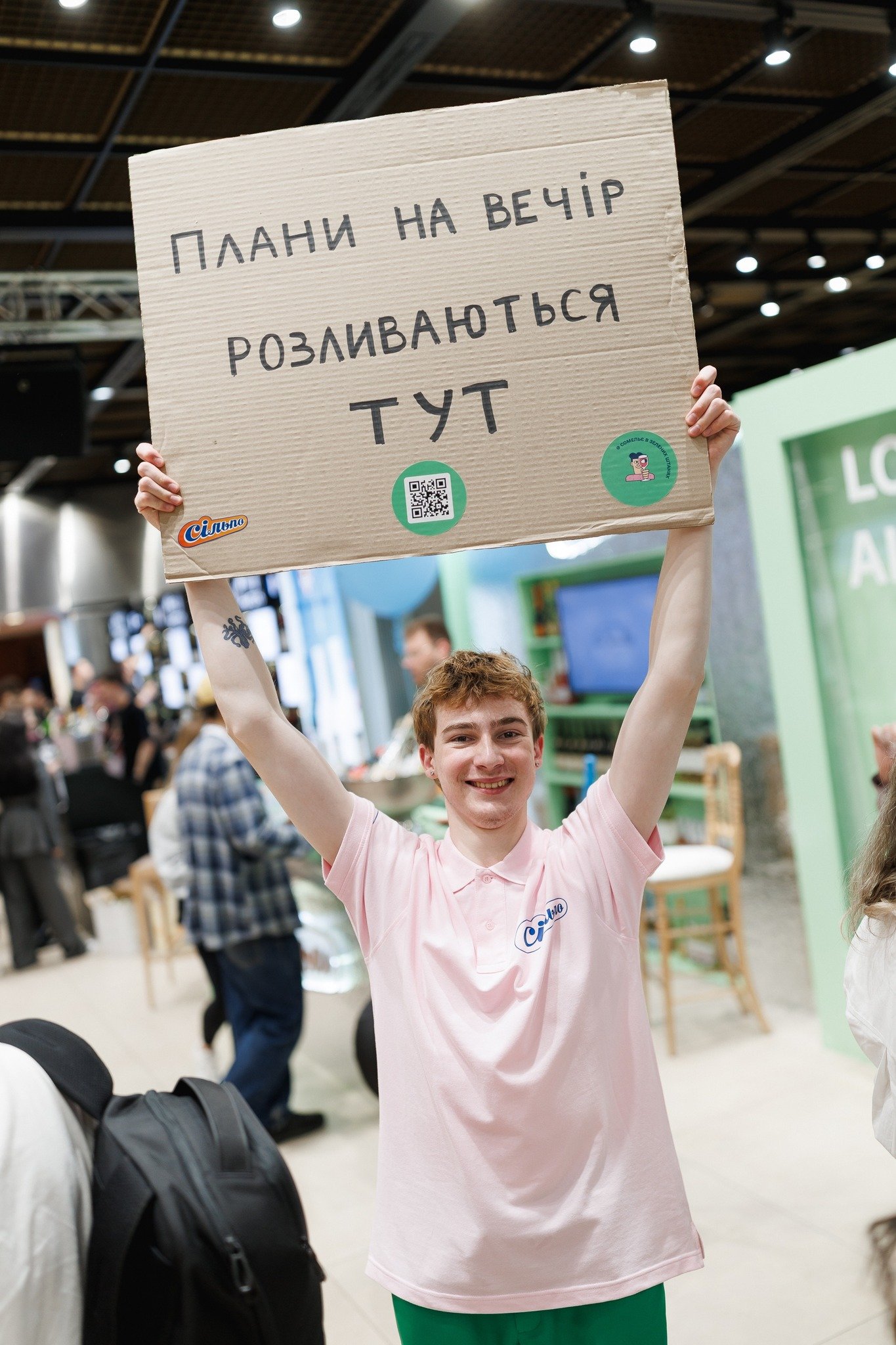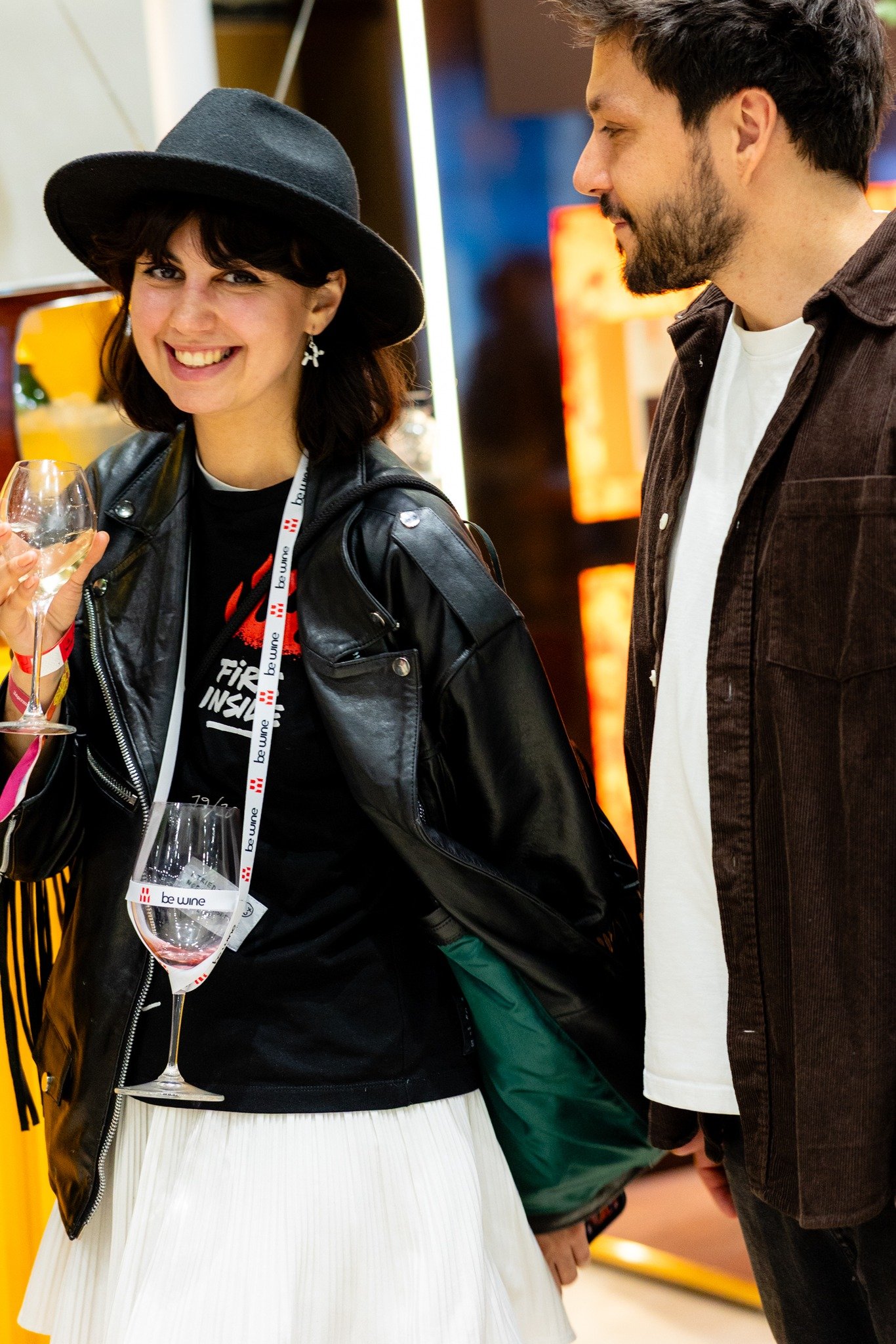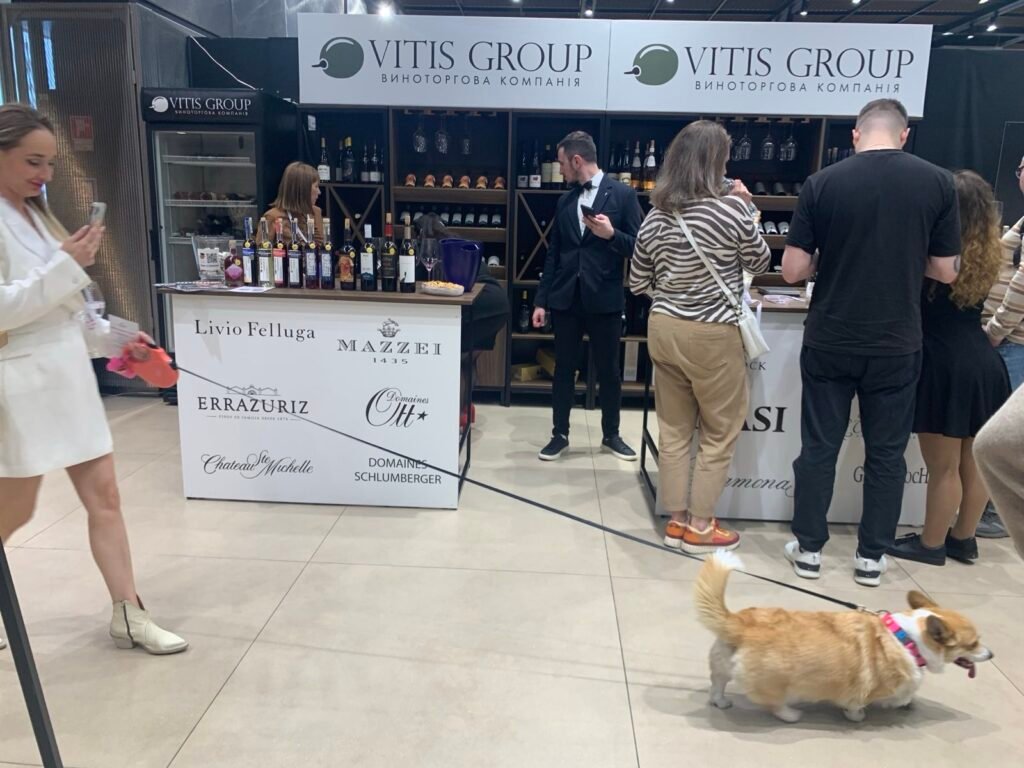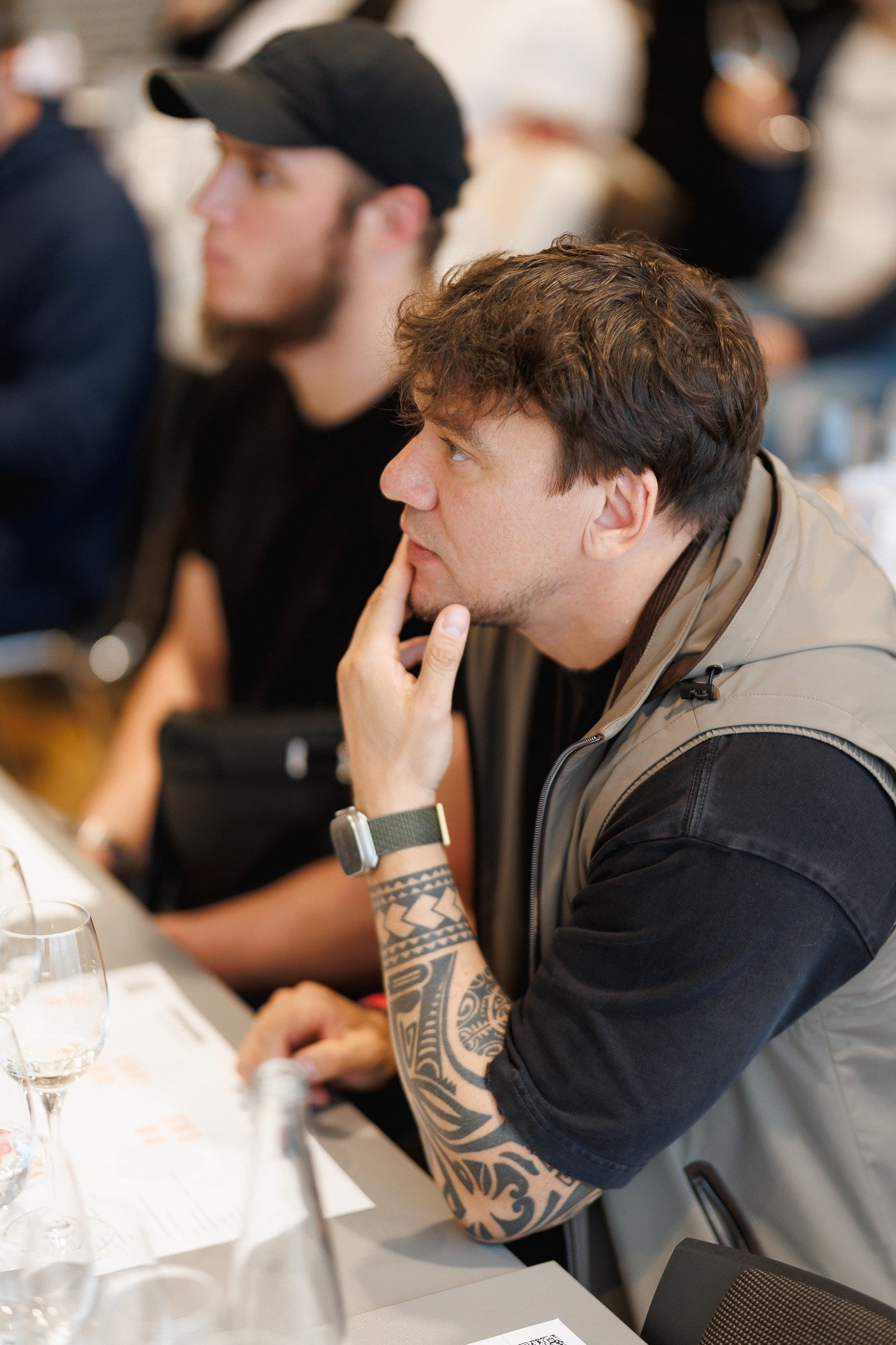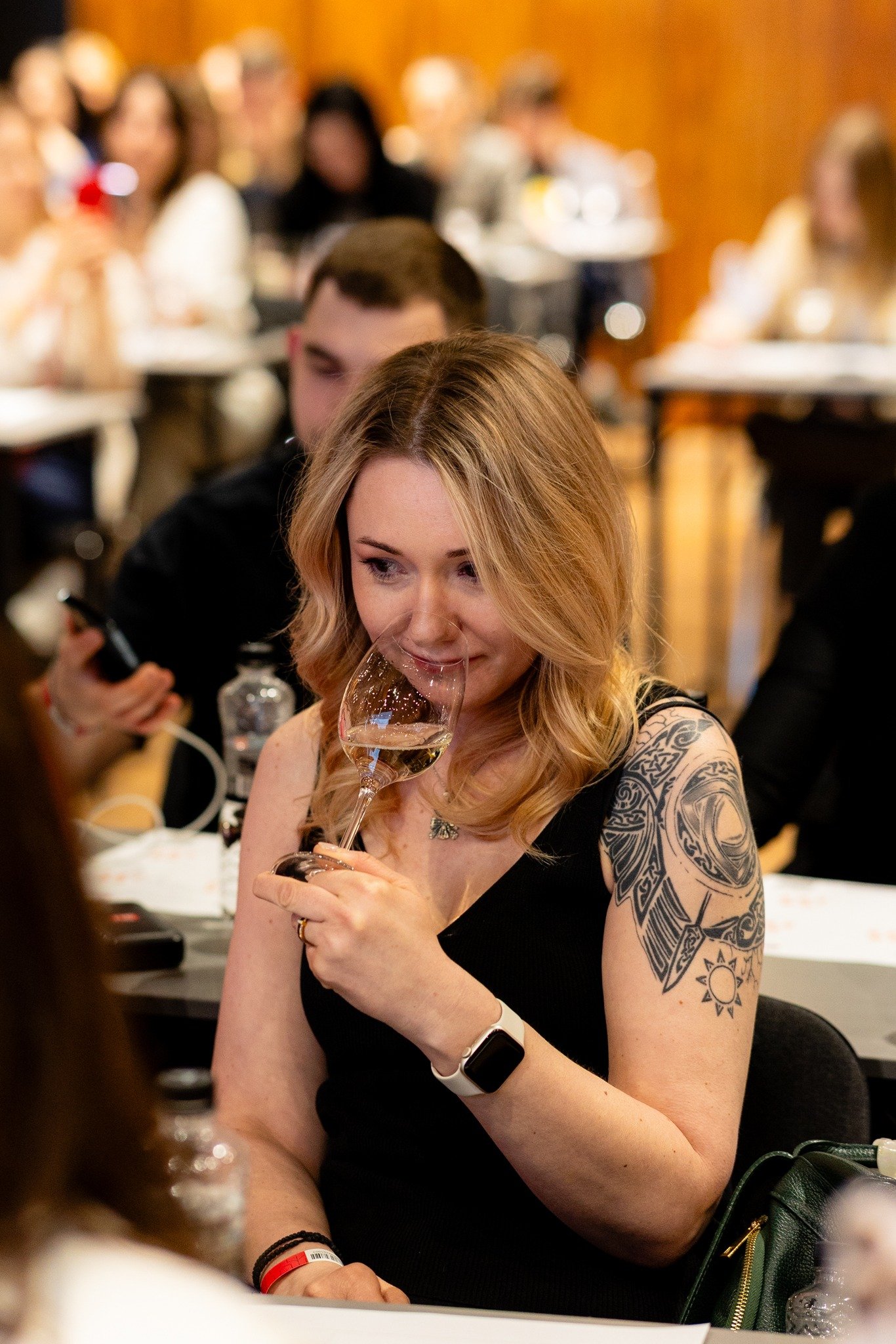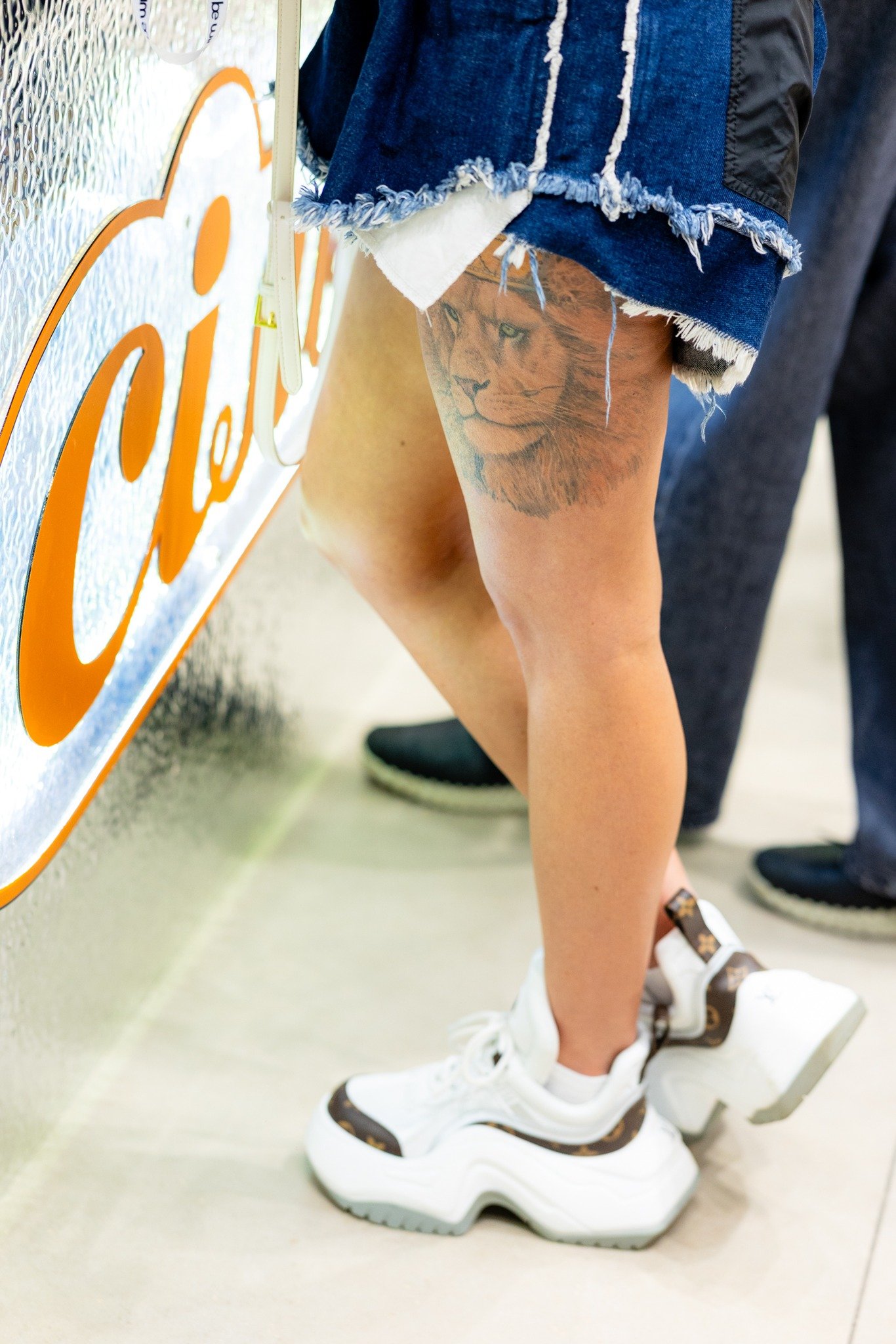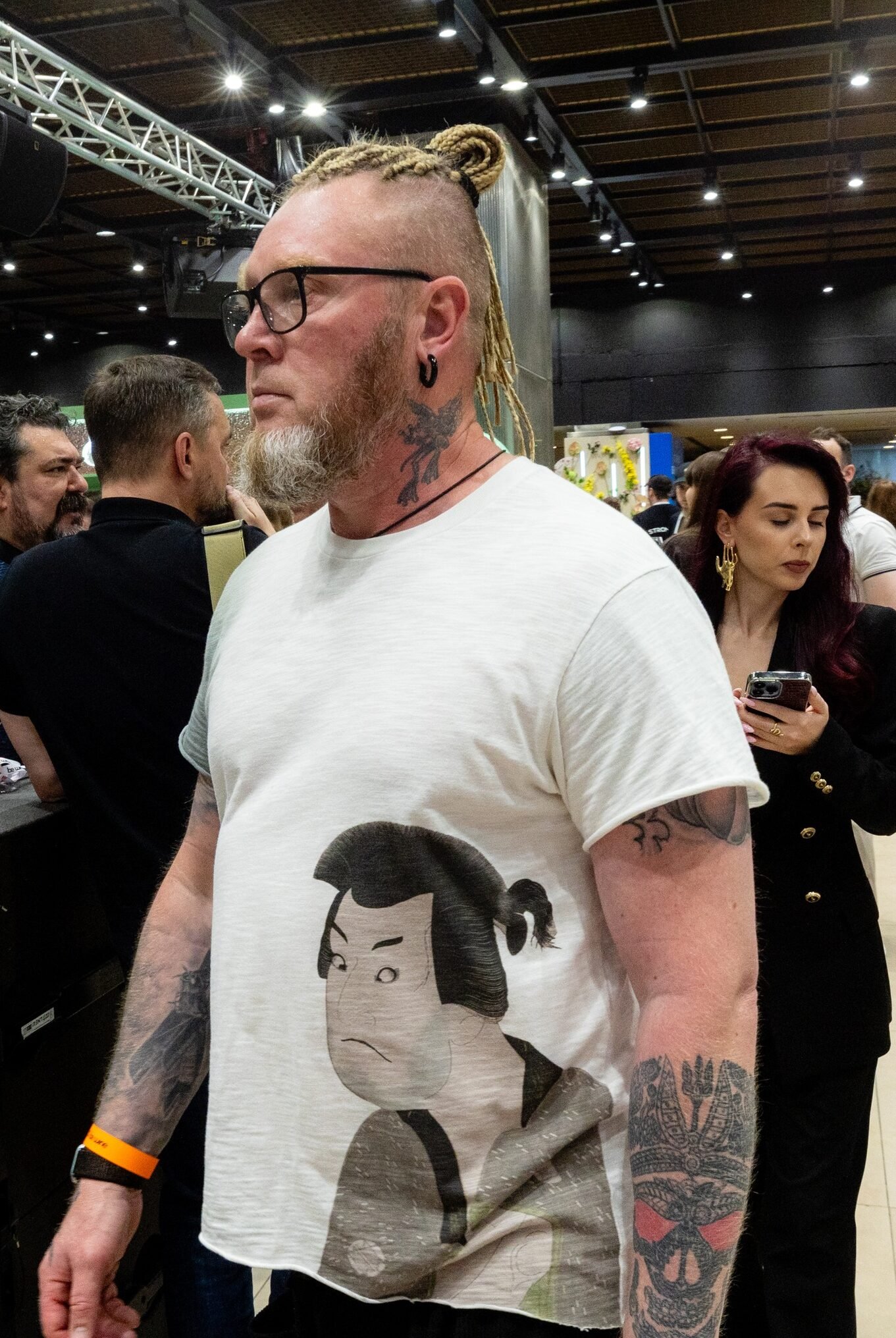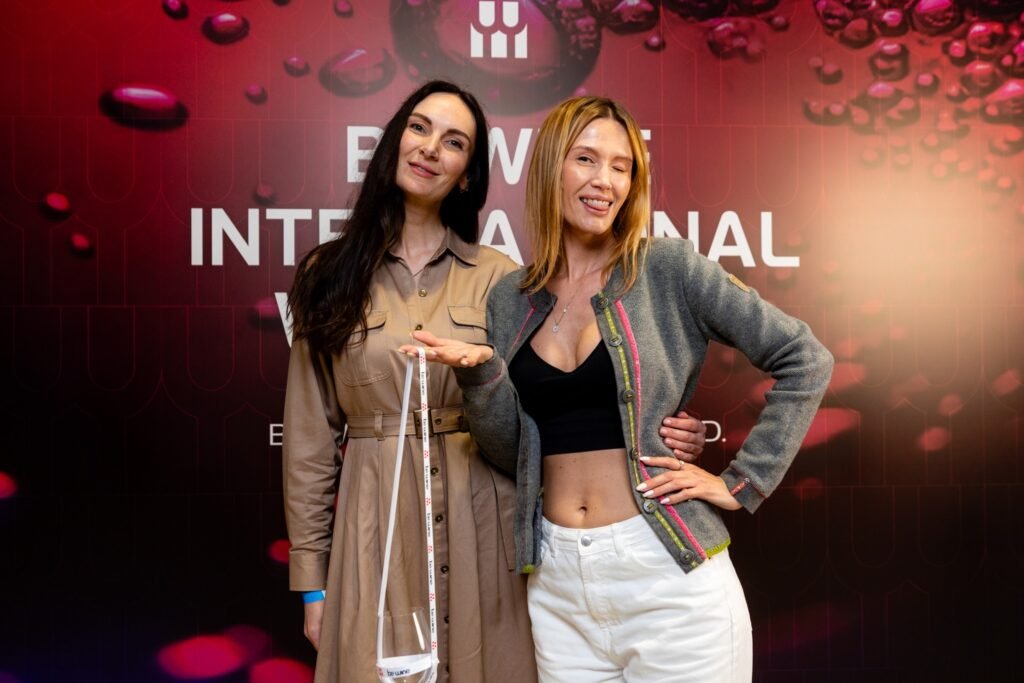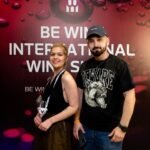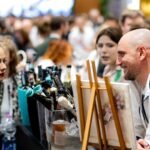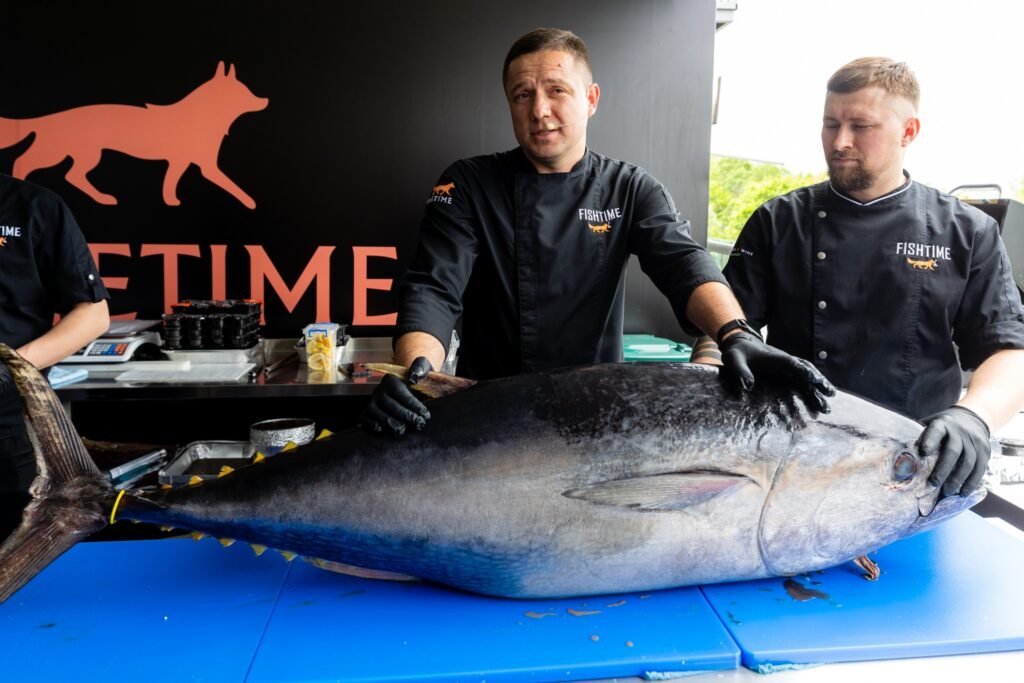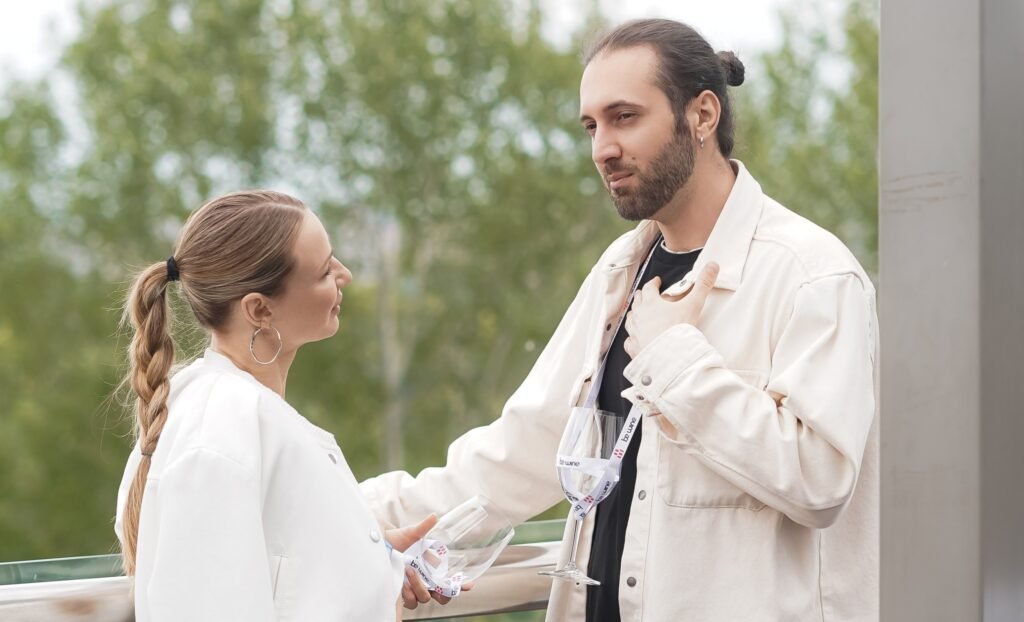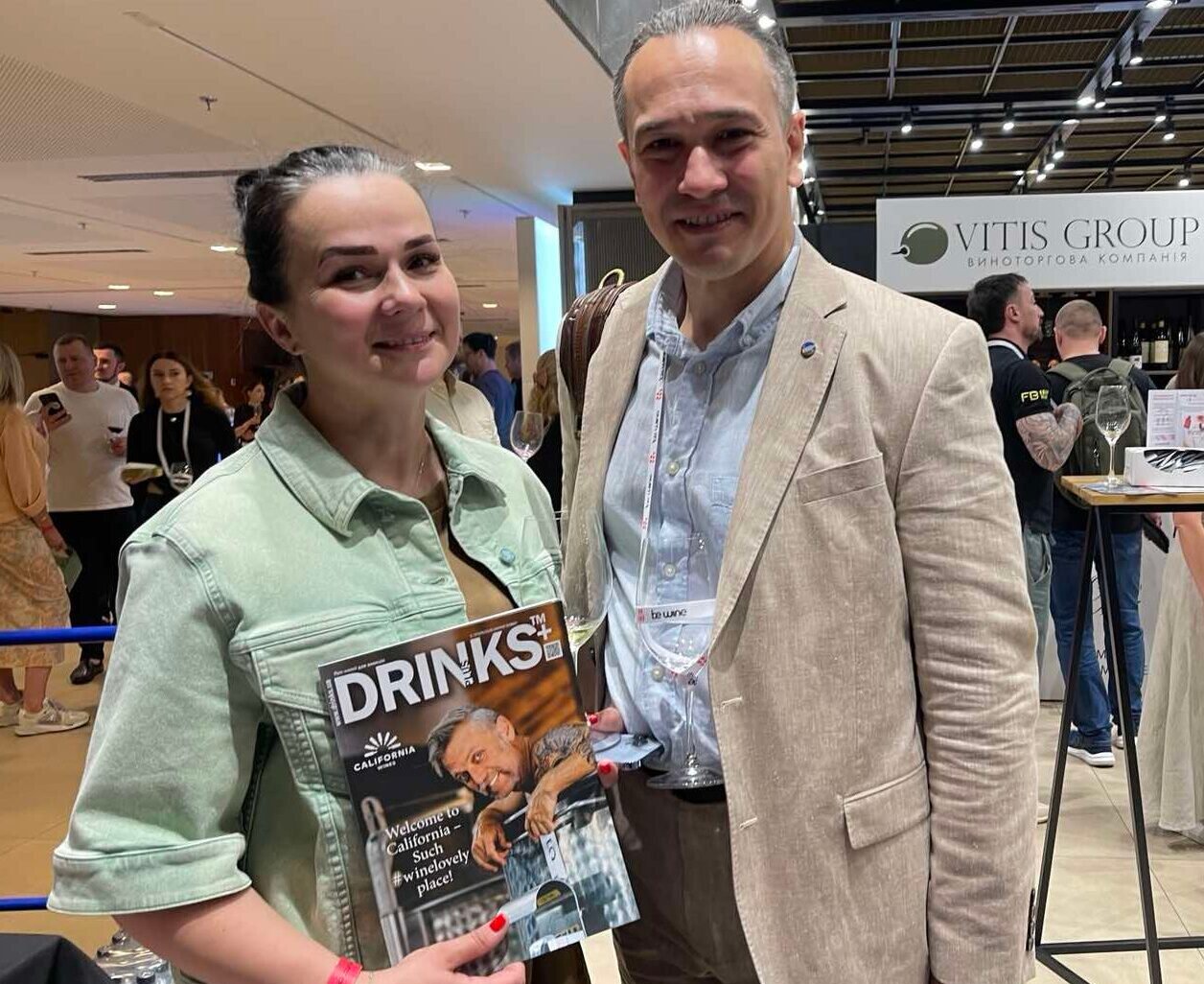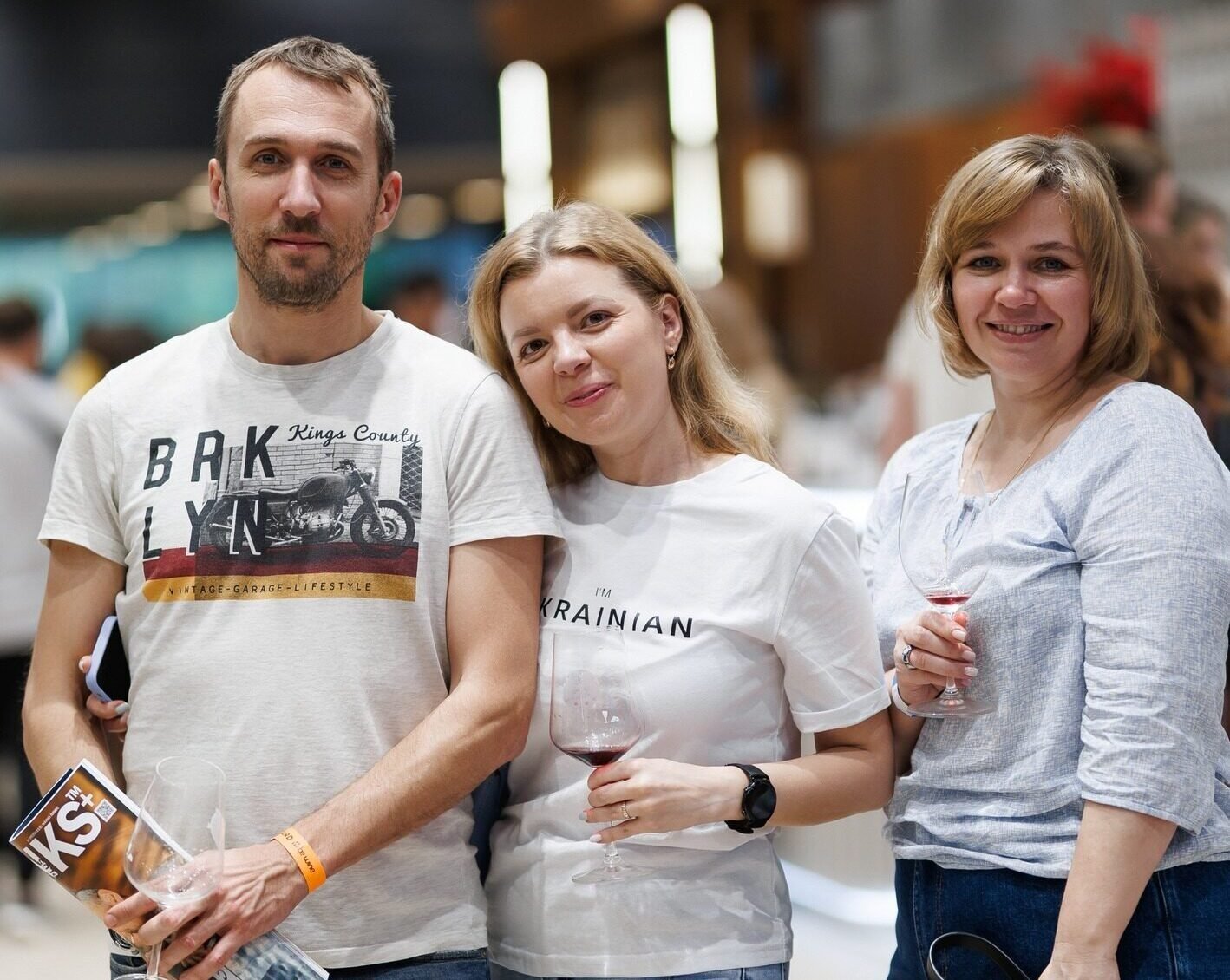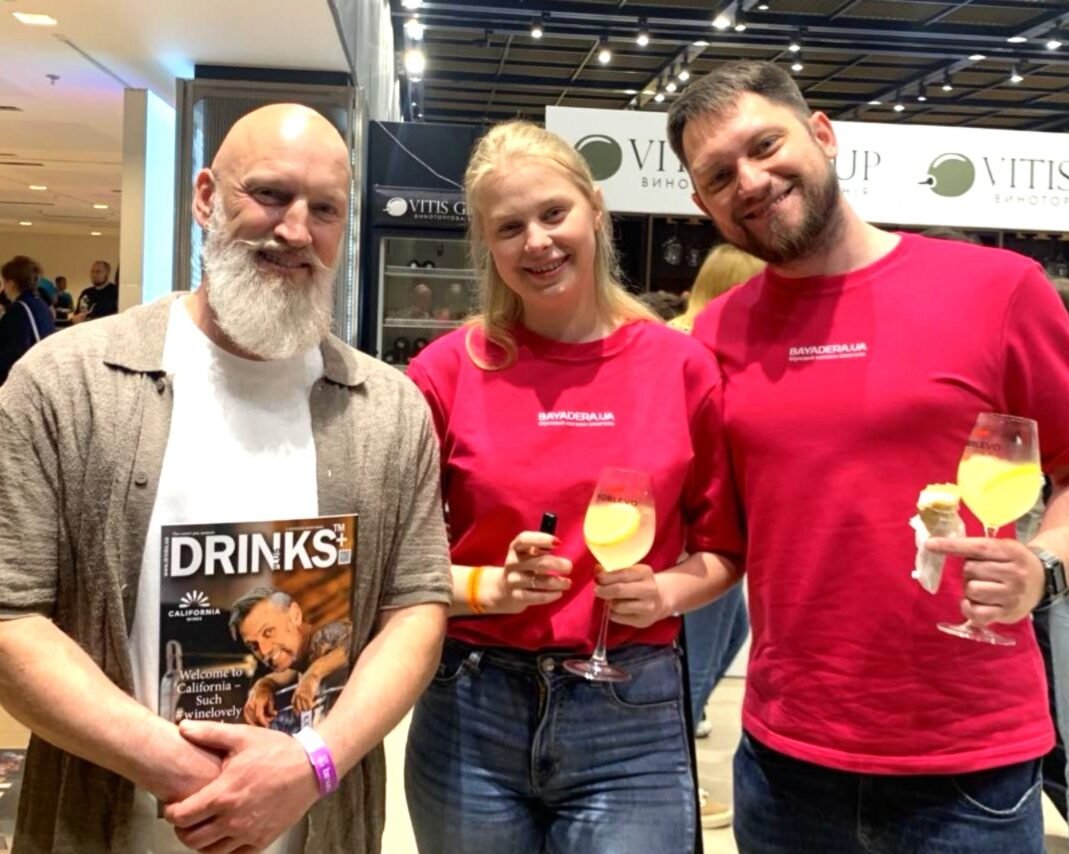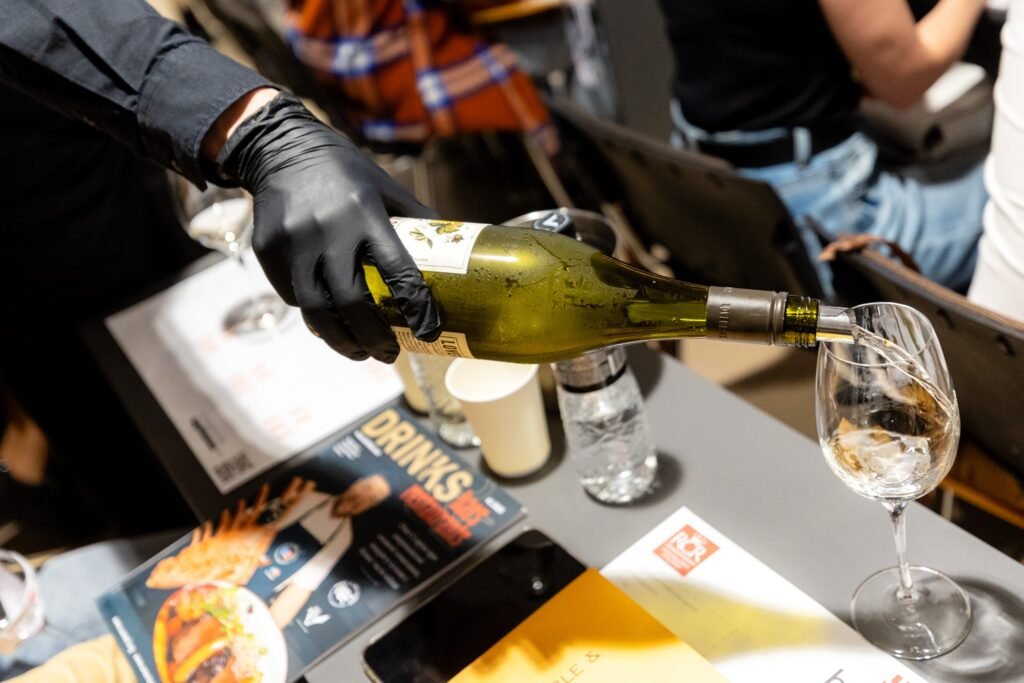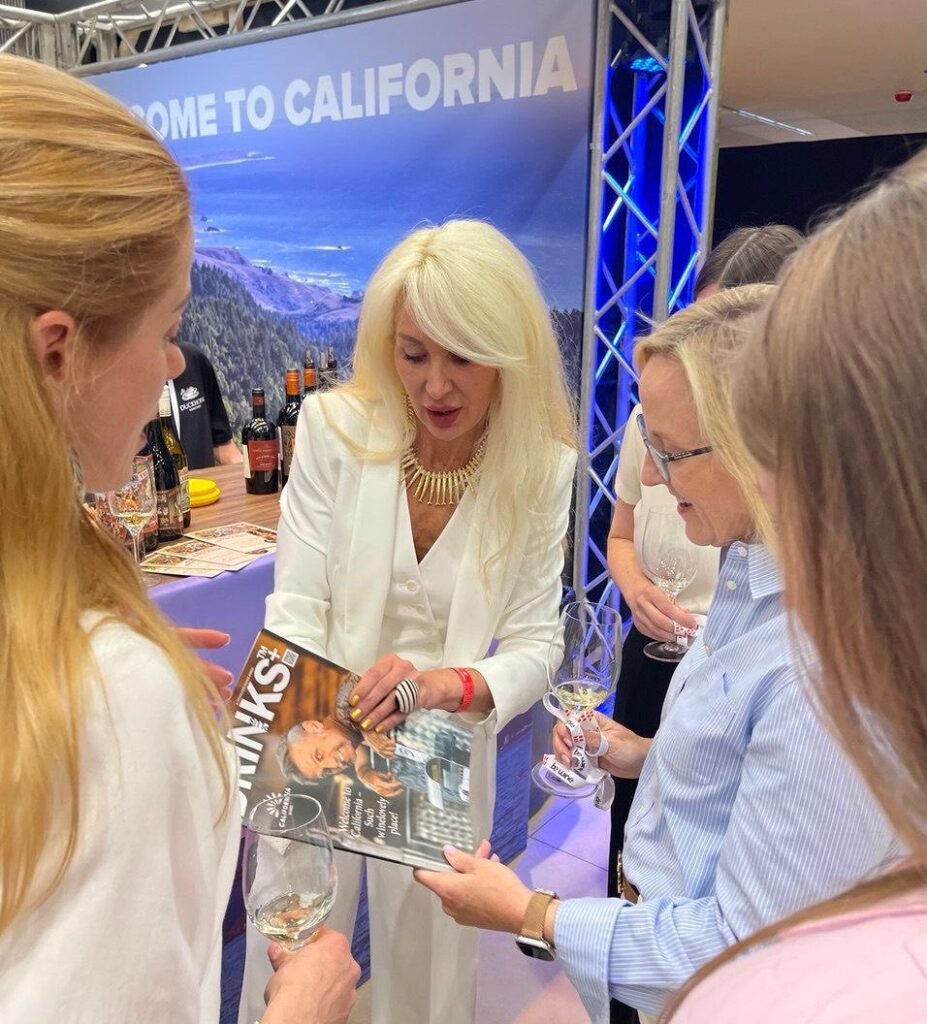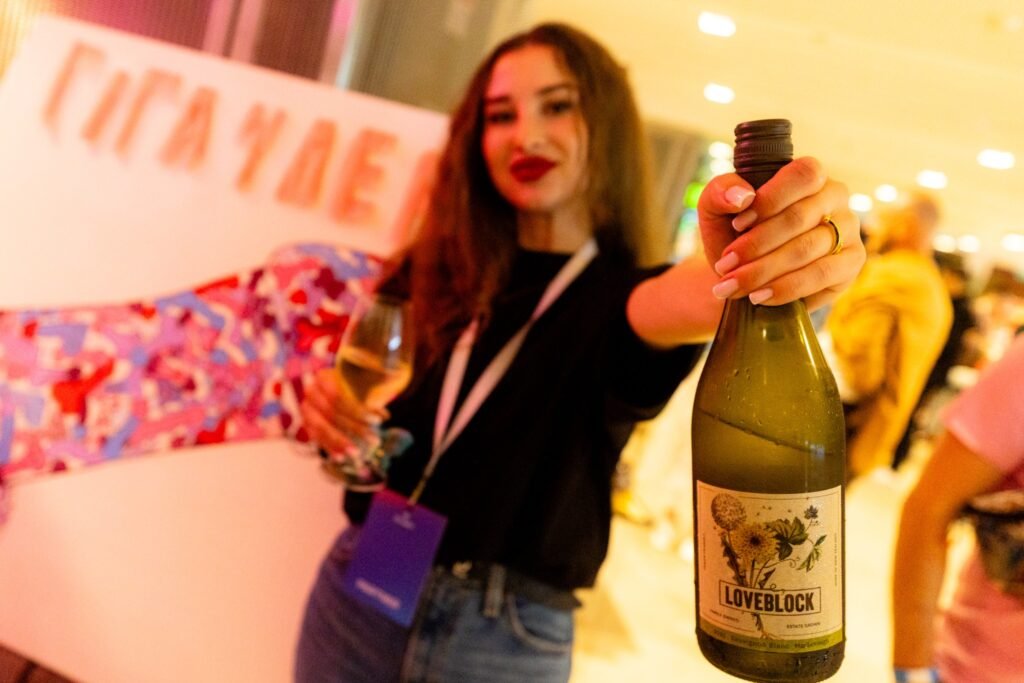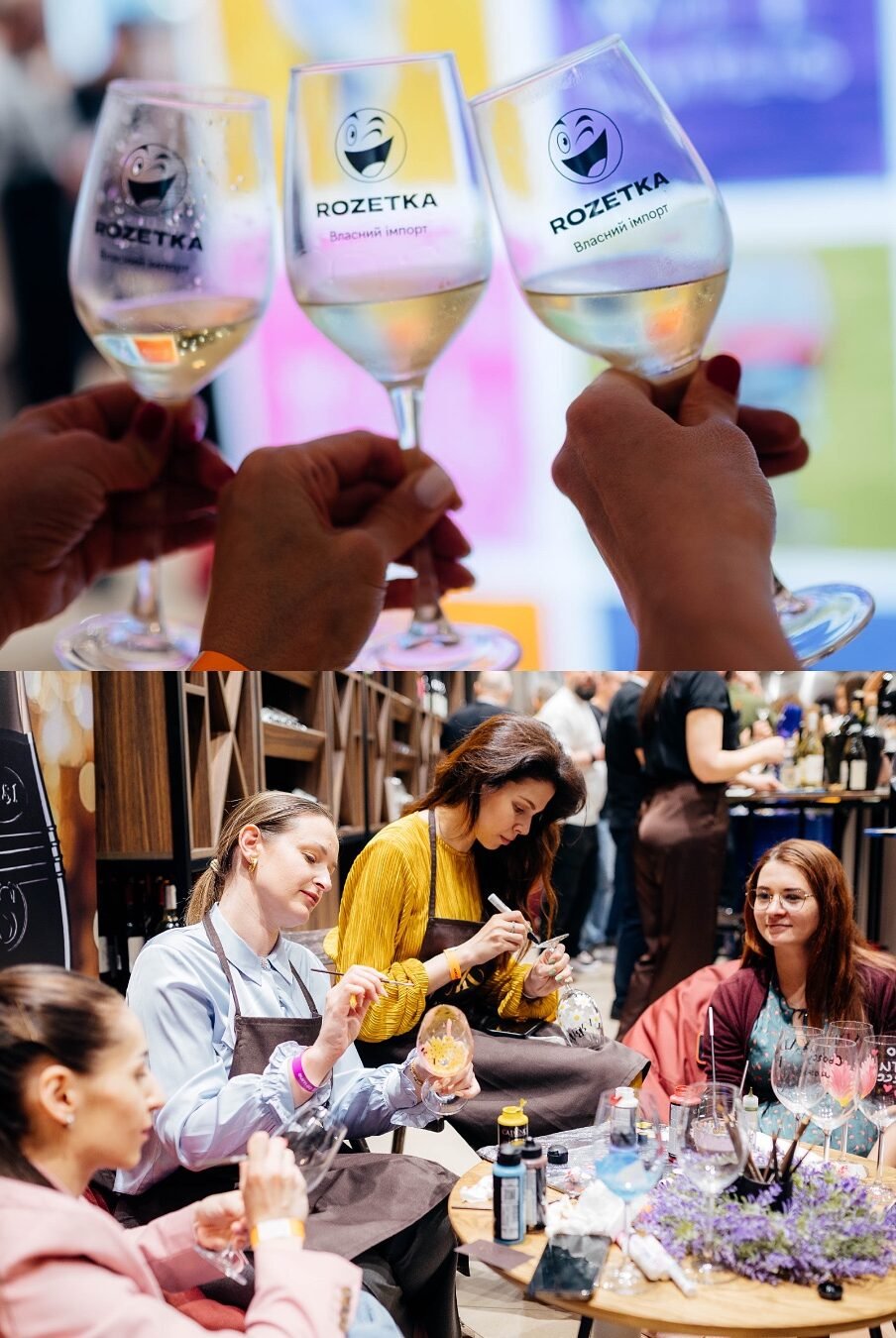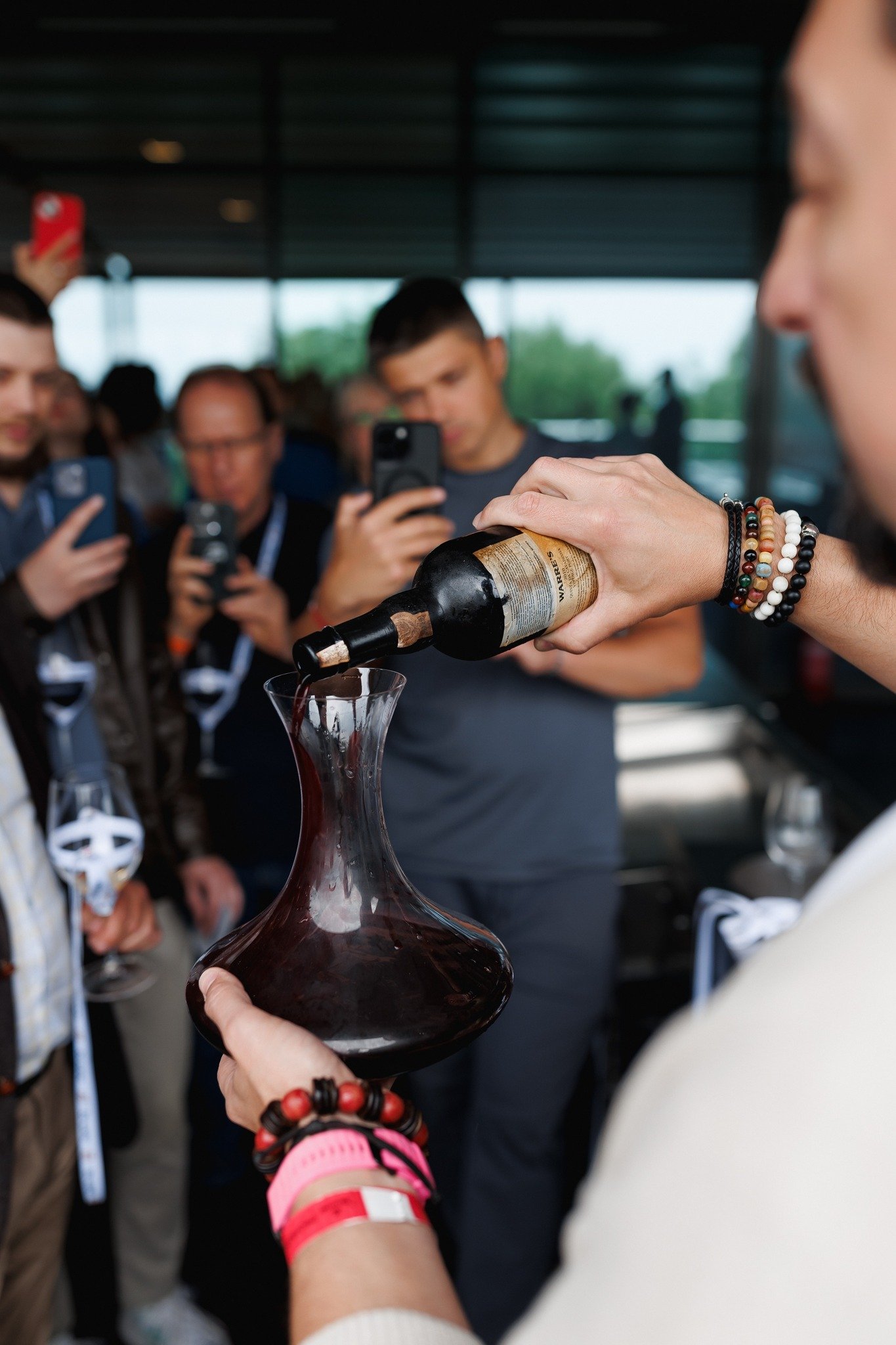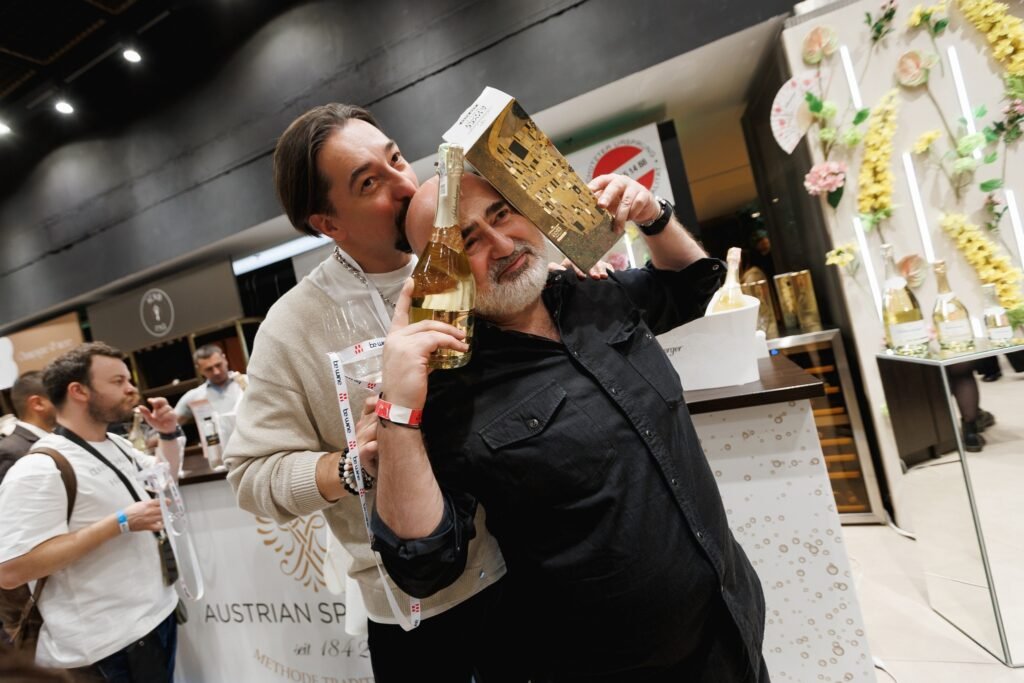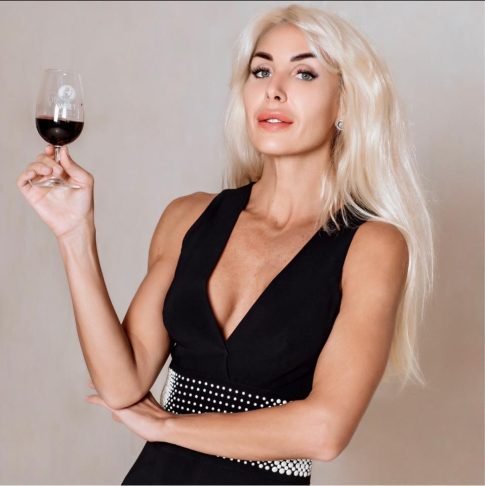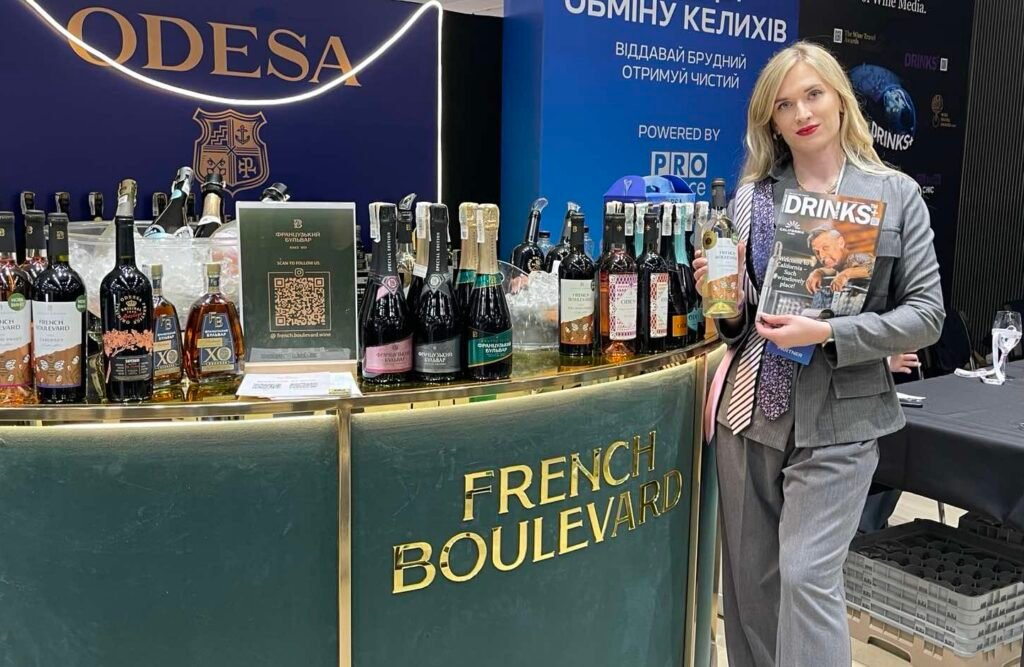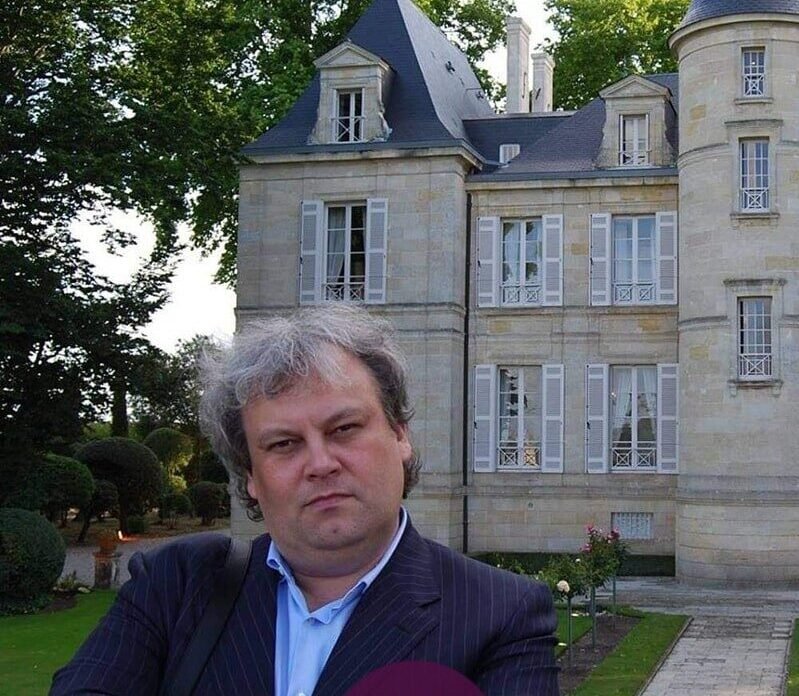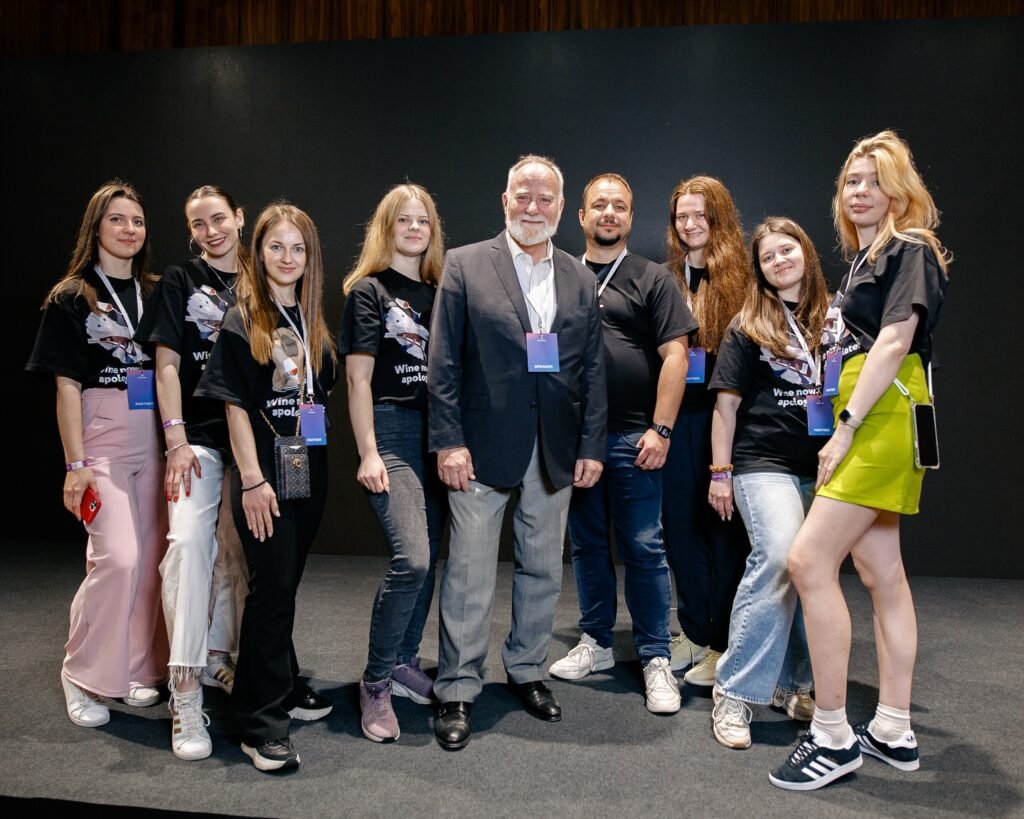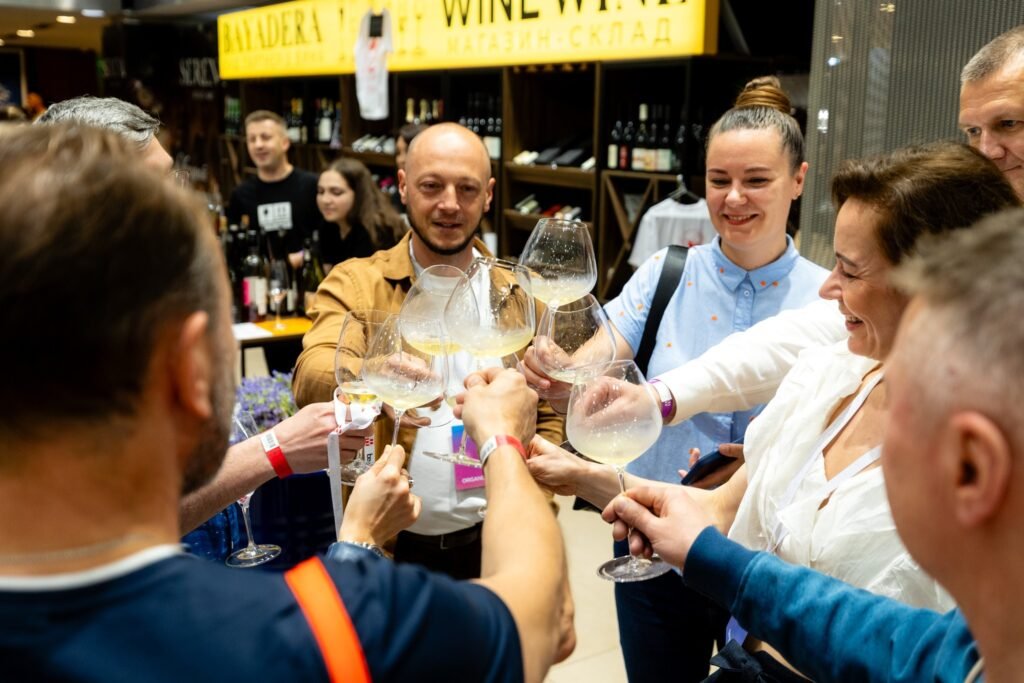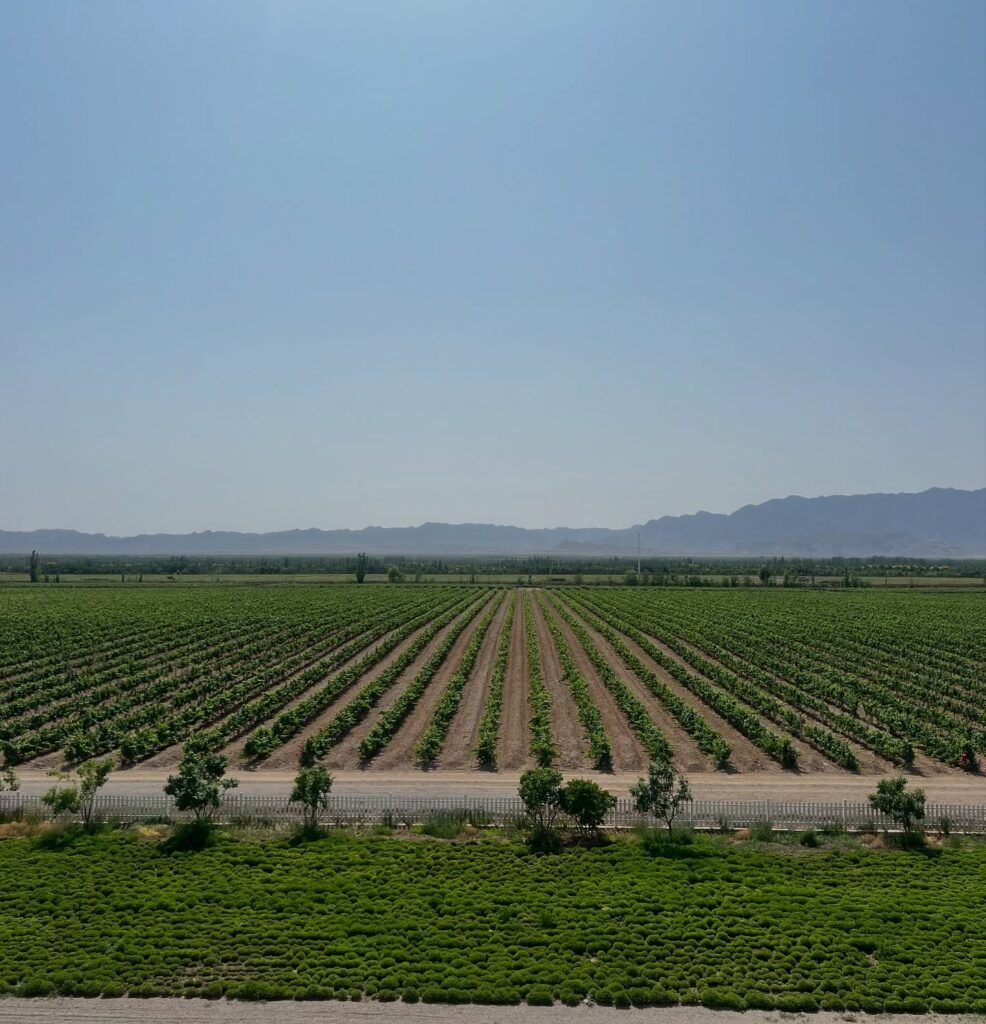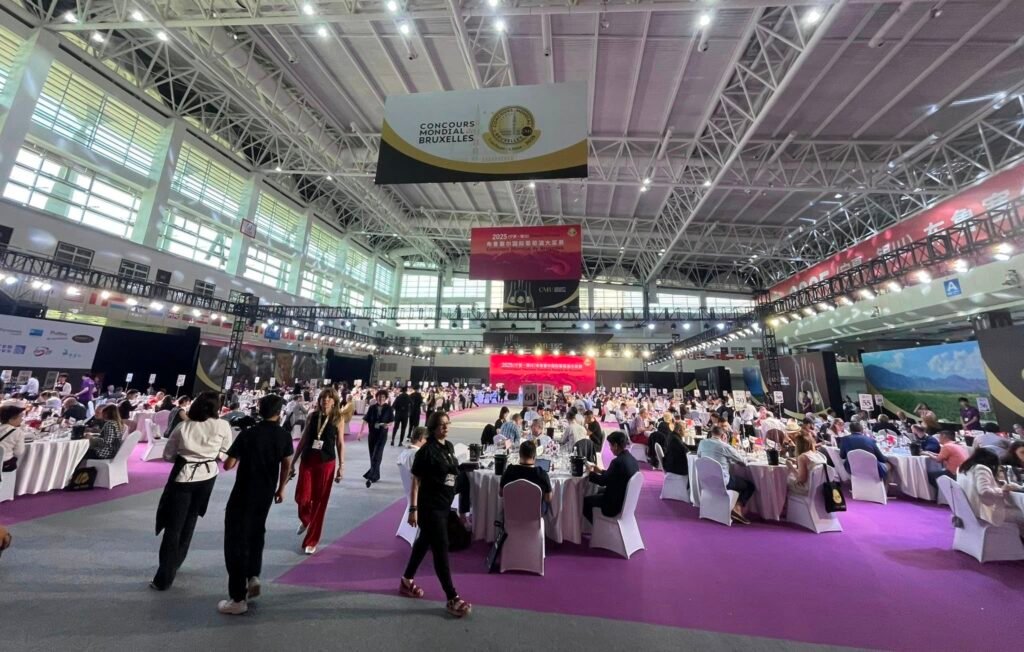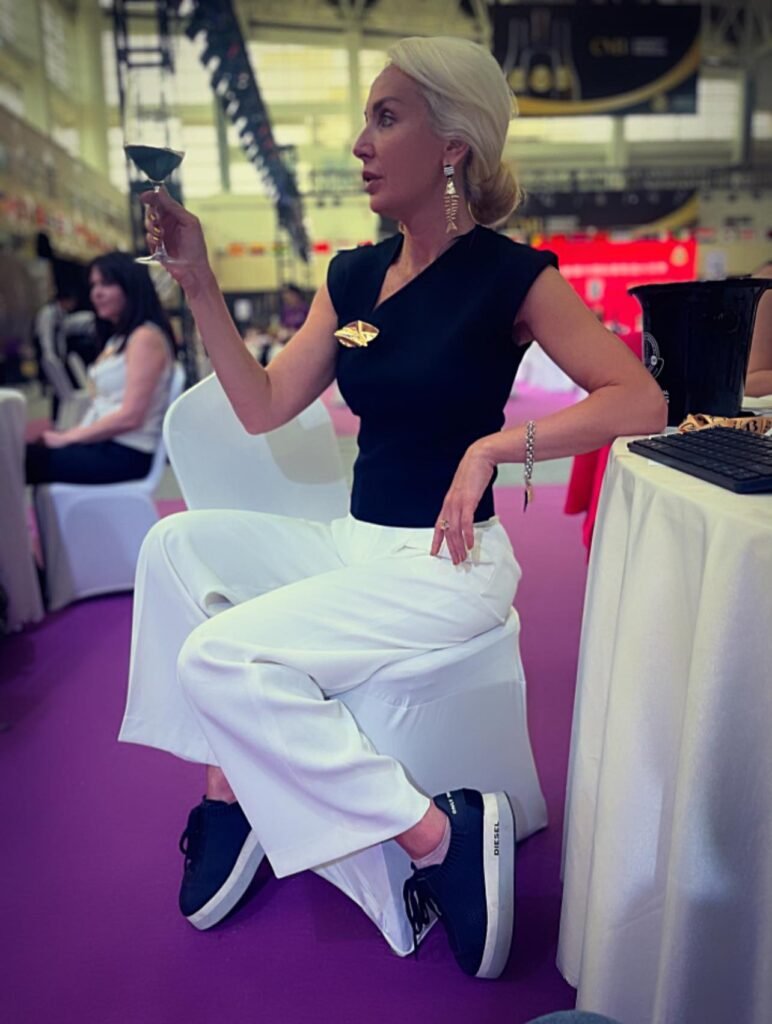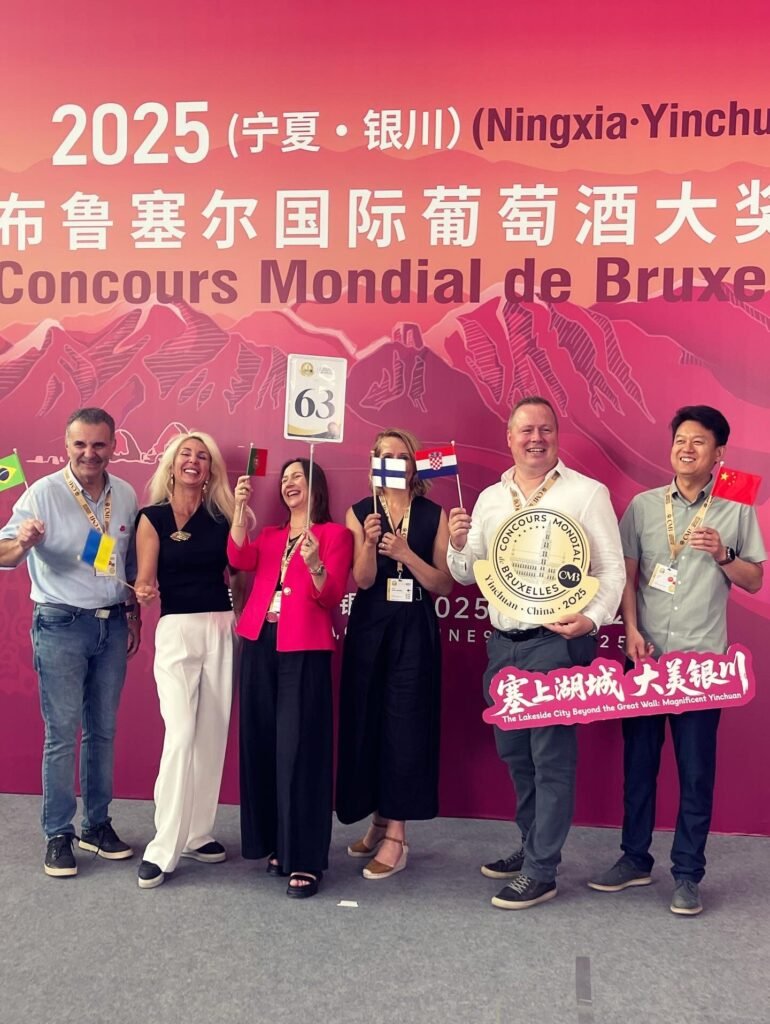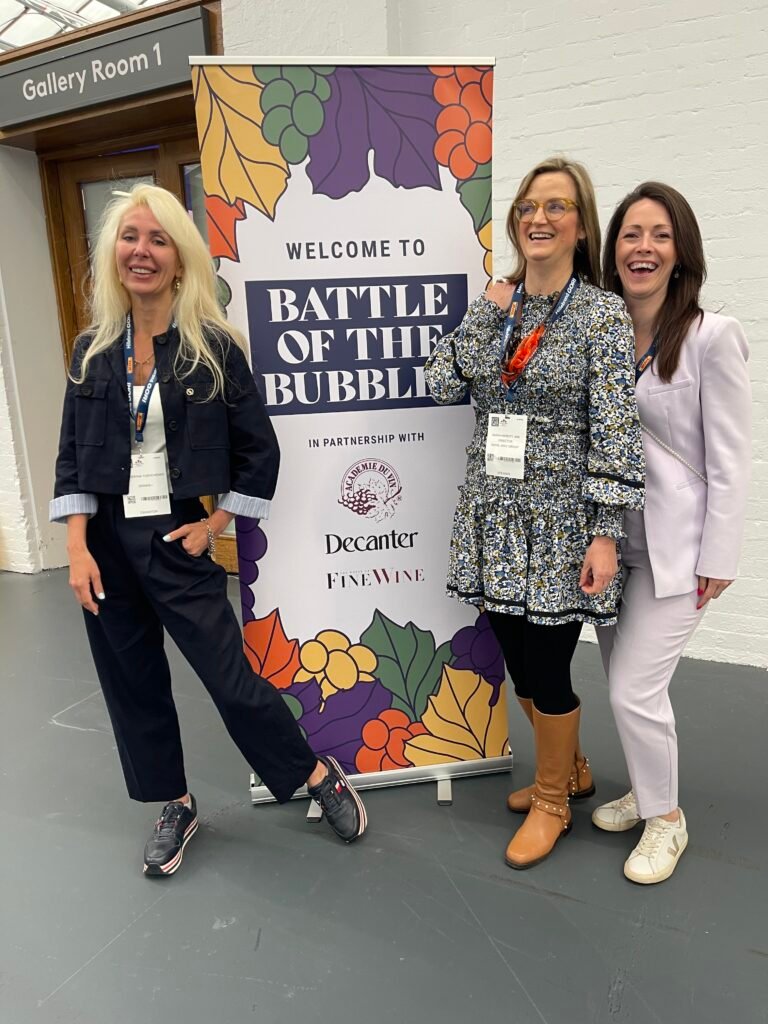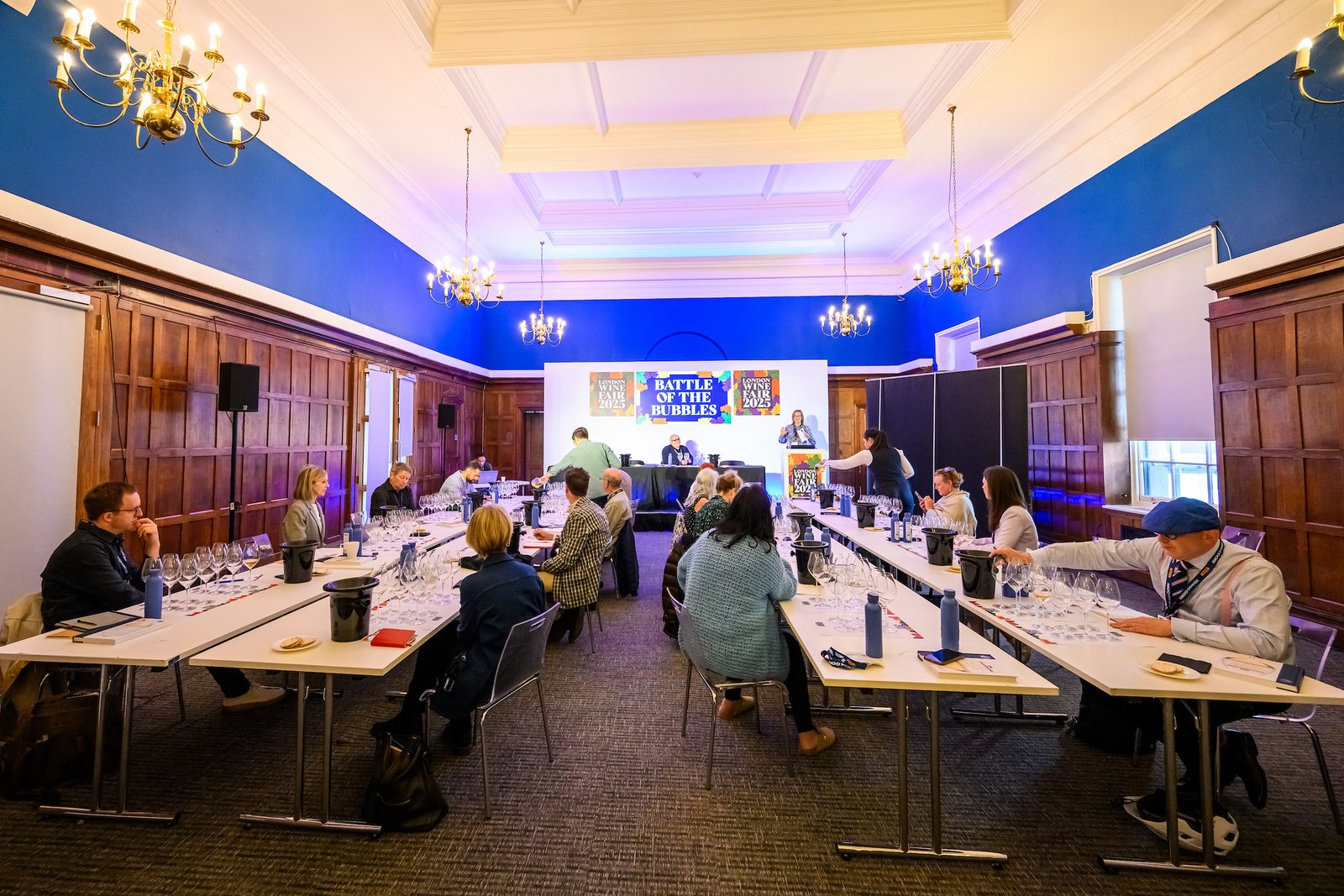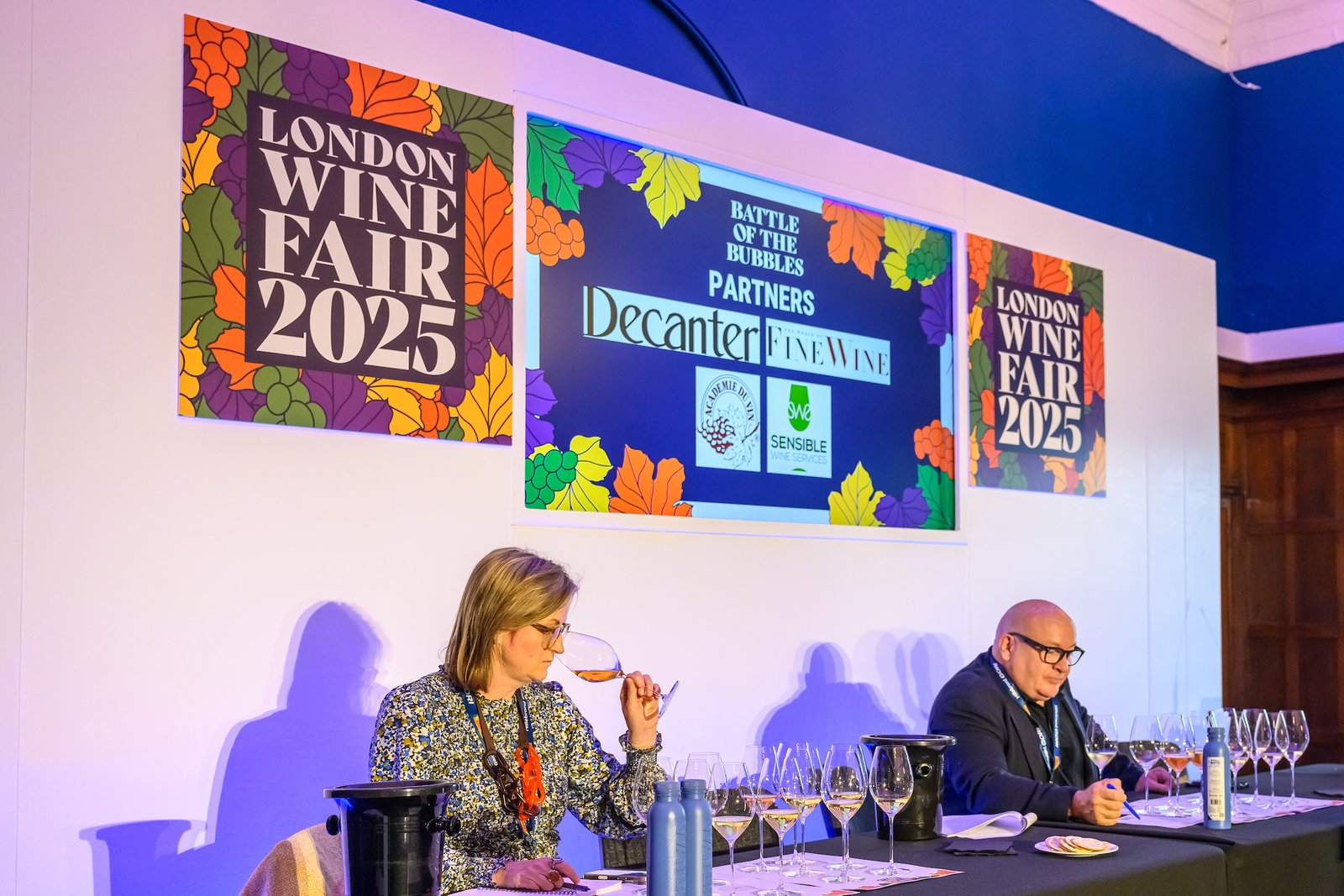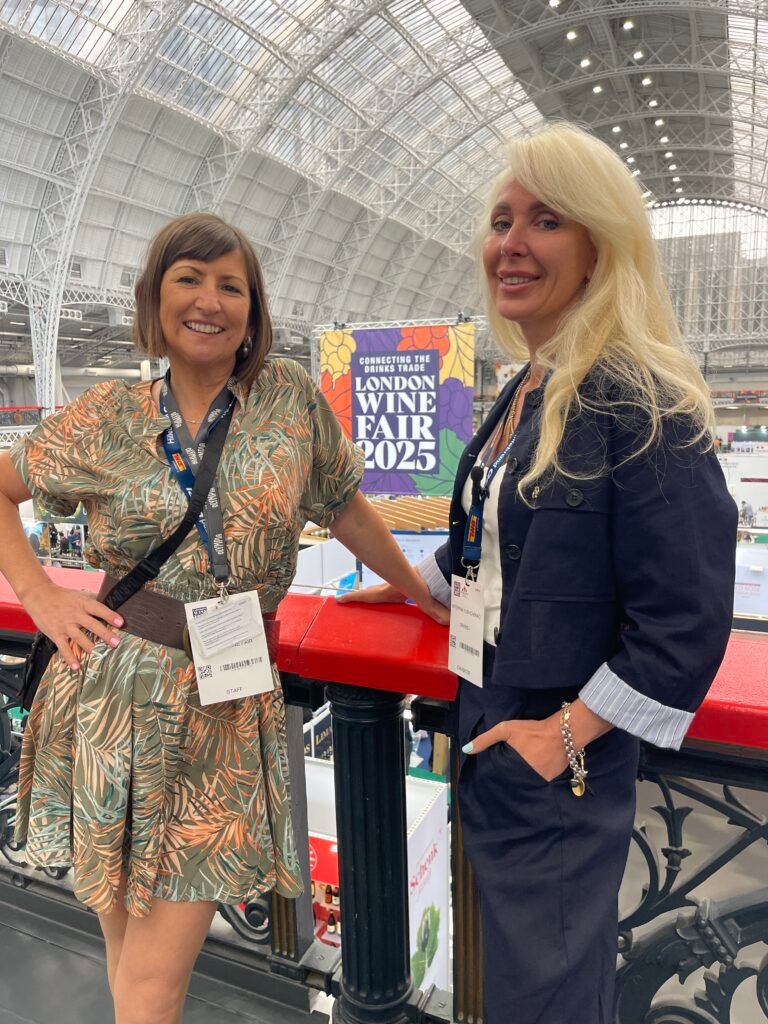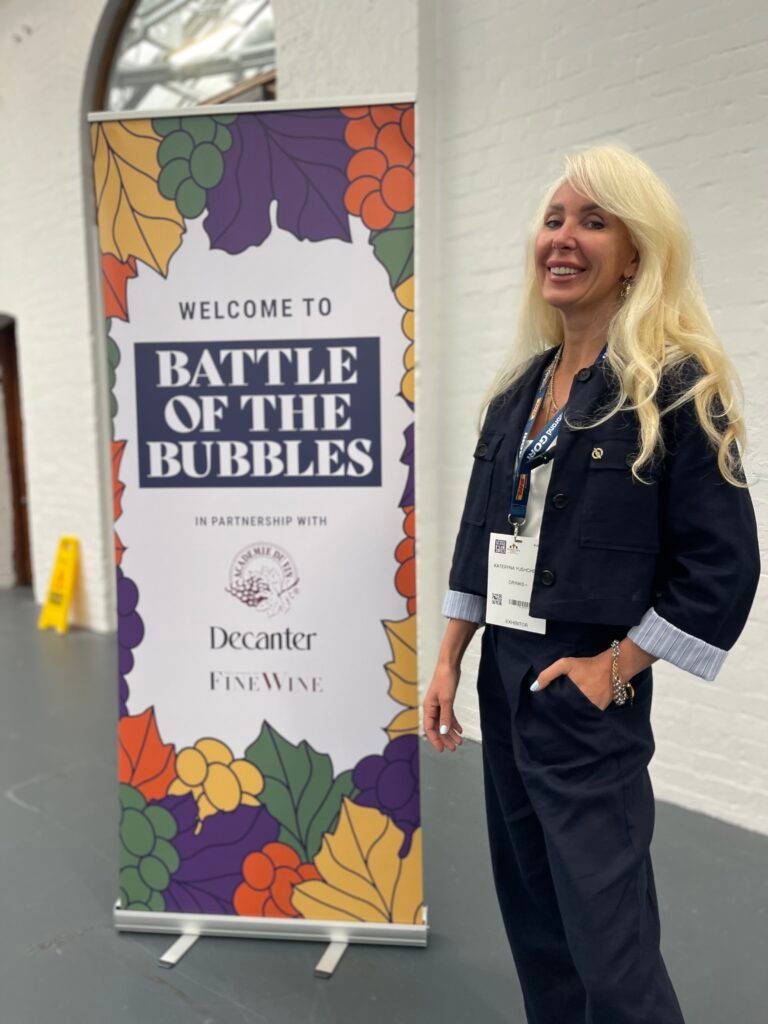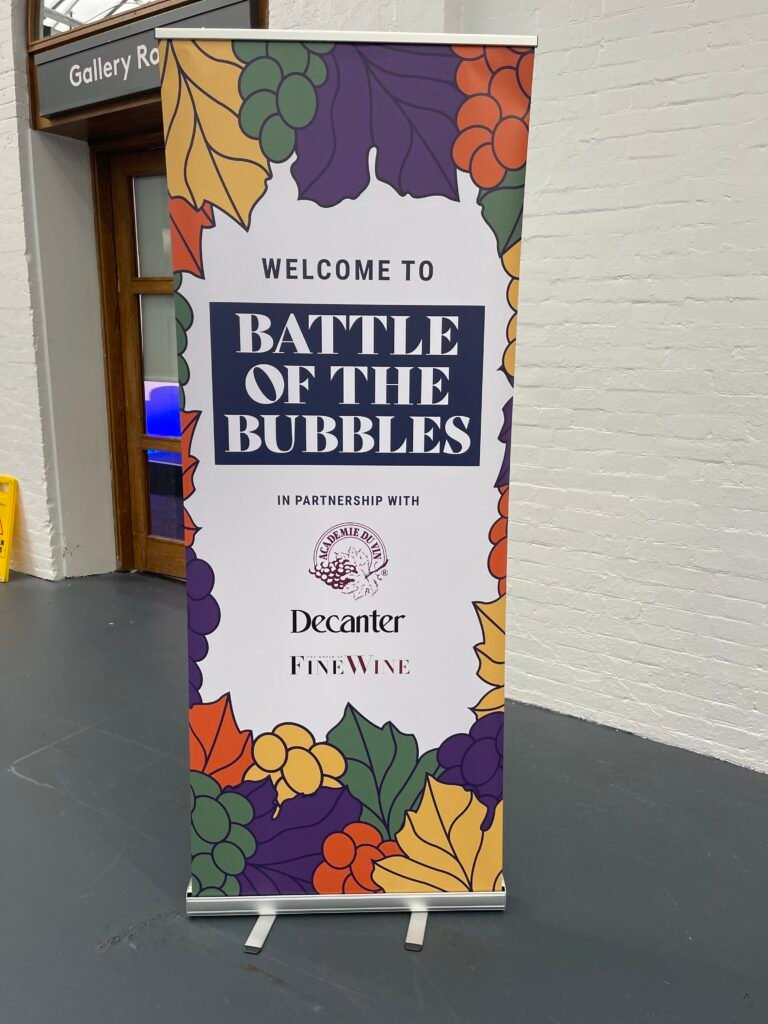Each year, the Wine Travel Awards Ceremony – traditionally held during the London Wine Fair – offers far more than an awards presentation. It is a vibrant and unforgettable celebration of global wine culture, bringing together winners, industry professionals, and wine lovers from around the world. The event seamlessly blends recognition with experience, featuring not only the presentation of diplomas and trophies but also a convivial welcome drink and a final walk-around tasting.
One of the highlights of every ceremony is the exclusive Wine Travel Awards Tasting – a curated showcase of exceptional wines that reflect the global reach and spirit of the WTA community. The 2024–2025 edition, marking the fourth season of the awards, was no exception. In fact, it vividly illustrated the broad and diverse geography of the project.
This year’s tasting featured outstanding wineries not only from renowned European wine countries such as Portugal, Italy, and Georgia, but also from as far afield as Thailand. The Wine Travel Awards team takes great pride in assembling this selection. There were presented native Georgian varietals, showcasing the birthplace of winemaking as well as complex blends, masterfully combining grapes, techniques, and traditions across styles and regions. And for the first time in WTA history, a pét-nat (pétillant naturel) joined the lineup – a sparkling milestone we proudly celebrate! Presenting such a vibrant and diverse range of wines, including those with Asian character, to the discerning British market was one of the most meaningful and carefully considered moments in the award’s history. We are thrilled to introduce our readers to this extraordinary collection. If you have the opportunity, we highly encourage you to visit these wineries in person and experience their wines firsthand. It will be a true discovery!
Quinta da Pedra – Portugal Opens the Ceremony
Symbolically, the Wine Travel Awards Ceremony was opened by Portugal – the homeland of legendary explorers. Representing this remarkable wine country was Fladgate Still & Sparkling Wines, part of one of Portugal’s most prestigious and influential wine groups. They offered guests an elegant white wine for the welcome drink, which could also be enjoyed during the ceremony’s walk-around tasting.
To revisit some history: The Fladgate Partnership, a powerhouse in the world of Port wine, owns four major Port houses, including the iconic Taylor’s. Beyond wine production, the group has made significant contributions to Portugal’s wine tourism, hospitality and distribution landscape. In 2010, it opened its first hotel in Porto, and during the pandemic launched the groundbreaking WOW (World of Wine) project – a cultural district in the heart of Porto featuring seven museums, twelve restaurants and bars, retail spaces, a wine school, and an exhibition gallery. WOW has become a major driver of tourism in the region and a landmark for wine lovers worldwide.
Fladgate Still & Sparkling Wines, the group’s important division, offers a refined portfolio of high-quality Portuguese wines capable of standing shoulder to shoulder with those from Champagne, Bordeaux, and Burgundy. The wine presented at the WTA ceremony came from Quinta da Pedra – one of the most historical properties in the Alto Minho region, dating back to the 17th century. This fresh, balanced, and vibrant white wine was a perfect ambassador for Portugal’s winemaking excellence.
GRAÇA DA PEDRA ALVARINHO 2022 BY QUINTA DA PEDRA. Vinho Verde DOC
The fresh and elegant dry white wine is produced in the heart of Monção and Melgaço, a subregion of the Vinho Verde appellation, where Alvarinho excels. Lightly chilled pre-fermentation maceration, gentle pressing. Fermentation in stainless steel with controlled temperature. After 6 to 9 months, the wine is finned, filtered and then bottled to be released to the market.
- Grape: Alvarinho (100%)
- Сolor: Bright yellow with greenish tinge
- Aroma: Pronounced aroma of fresh citrus, mandarine and stone fruits.
- Palate: Light to medium body, with a vibrant acidity that cuts through the entire palate. Silky texture and very long, mineral aftertaste
- Alcohol: 13%
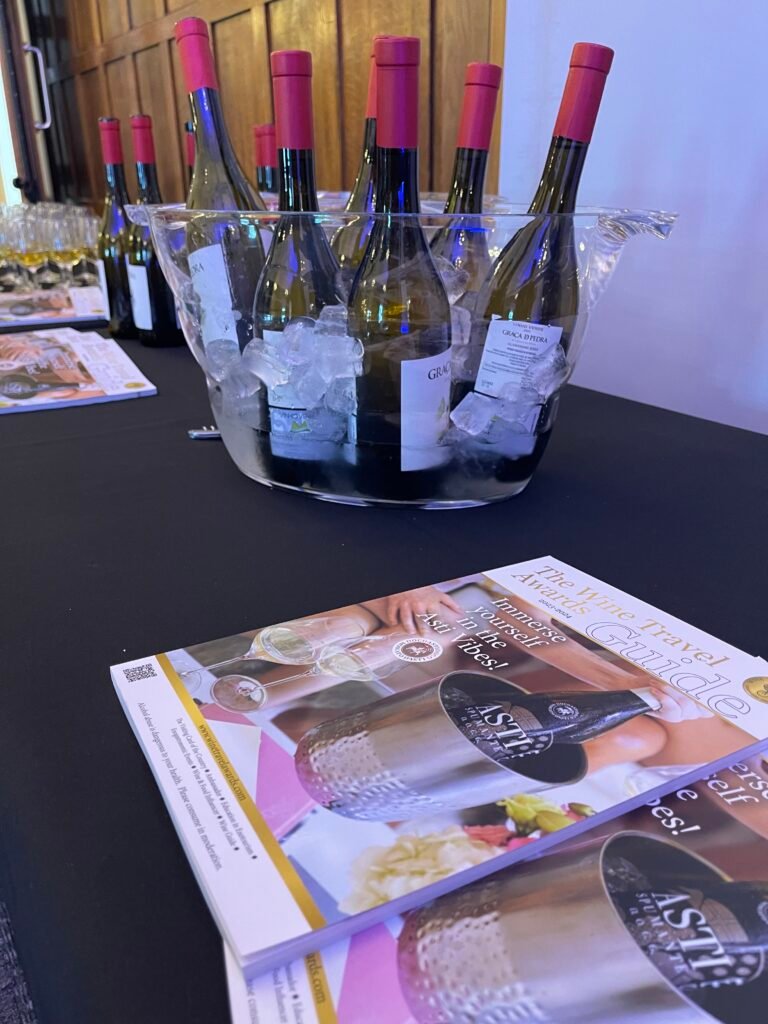
Italy Joins the Celebration: Ventiventi Winery
The second participant in the festive tasting was Ventiventi Winery from Italy – a modern and dynamic producer located in Medolla, in the Emilia-Romagna region, and a proud new member of the Wine Travel Awards community. Founded in 2020 by the Razzaboni family, Ventiventi set out with a bold mission: to offer a fresh interpretation of Emilia-Romagna wines. Rather than reducing the reputation of local grape varieties to a simple value-for-money proposition, Ventiventi aims to highlight their natural elegance. The name Ventiventi is no coincidence—translated from Italian, it means “twenty twenty” (20/20), marking the year the winery was born. The estate specializes in sparkling wines, most of which are crafted using the traditional Metodo Classico (Classic Method).
Sustainability lies at the heart of the Razzaboni family’s philosophy. Their approach emphasizes respect for the region’s native grape varieties – such as Lambrusco di Sorbara, Lambrusco Salamino, Pignoletto, and Ancellotta – while also cultivating international varieties like Pinot Blanc and Chardonnay. This balance enhances Ventiventi’s ability to produce wines with distinctive character and depth.
Wine tourism is a cornerstone of Ventiventi’s identity. The team understands that sharing their story directly with visitors is key to building a strong brand and fostering lasting connections. For the Razzaboni family, hospitality goes beyond wine and food – it’s about engaging personally with wine lovers, journalists, and industry professionals, transforming each visit into a memorable experience. Ventiventi aspires to be more than just a stop along a wine route; it strives to create moments that visitors will take home with them as lasting memories.
At the London tasting, guests were introduced to Ventiventi’s wines by Riccardo Razzaboni, the eldest of the Razzaboni brothers. With a background in economics and marketing, Riccardo leads the winery’s sales and promotional efforts. He personally selected and presented the next lineup of wines.
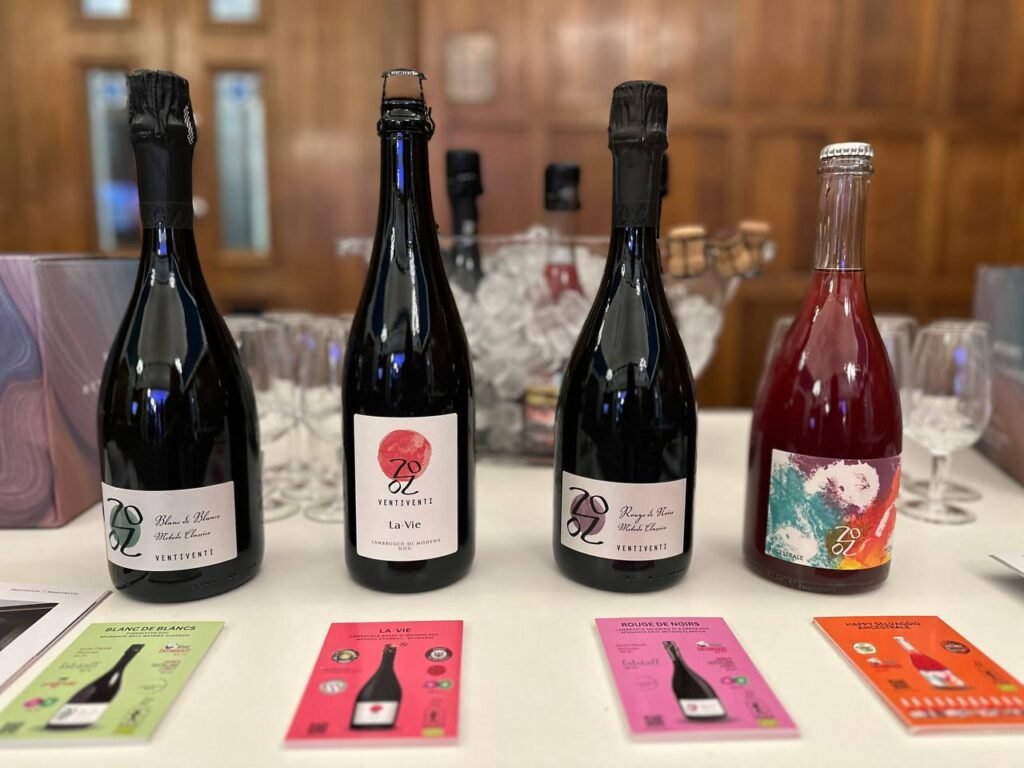
- Blanc de Blanc, PIGNOLETTO DOC, Metodo Classico
After 26 months on the lees (and soon 36!), the Blanc de Blancs offers complex aromas: ripe white fruit and delicate hints of baking intertwine harmoniously. Fermented at low temperatures in stainless steel tanks. Organically certified, it has earned high praise from critics, including Wine Enthusiast 90 pt and Gambero Rosso 2 bicchieri.
- Grape: Pignoletto (100%)
- Сolor: Straw yellow
- Aroma: Delicate and fine, with fruity scents
- Palate: Full-flavored and tasty, with remarkable minerality. The retained and persistent perlage highlights its freshness. On the palate, it is creamy and persistent, with an almond note in the finish. And no, it’s not a mistake. That almond note is the distinctive signature of Pignoletto, a mark of authenticity
- Alcohol: 11.5%
- La Vie, LAMBRUSCO ROSSO DI MODENA DOC, Charmat Method
La Vie is an organic sparkling red wine from Italy’s Emilia-Romagna region, crafted to embody the essence of life itself. Its name, La Vie – French for “life” – symbolizes the entire journey, from the vine’s growth cycle to the joyful moments shared with loved ones.
“This wine is made to bring joy and bring people together,” say its creators.
Falstaff 90 pt and Star Wine List 90 pt among other awards.
- Grape: Lambrusco of Sorbara (100%)
- Сolor: Light ruby red with pink reflections
- Aroma: is characterized by varietal notes: red fruits, with strawberry and raspberries standing out, grapefruit and floreal sensations framed by some salty/mineral nuances, a gift by the high percentage of clay in soils
- Palate: Juicy. More vertical and tense in the first gustatory
- stage, but ending with softer notes: the perfect mix of sapidity, freshness and sweetness able to preserve drinkability without sacrificing creaminess. A true roller coaster of sensations: this is La vie, a convivial wine perfect in any situation
- Alcohol: 10.5%
- Rouge de Noirs, LAMBRUSCO SALAMINO DI SANTA CROCE DOC, Metodo Classico
“A bubble that makes you smile. And when a bubble makes you smile, you’ve already won,” say about this wine its producers.
Organic certification, numerous awards, including 92 points from Wine Enthusiast.
- Grape: Salamino di Santa Croce (100%)
- Сolor: Intense ruby red
- Aroma: Fresh and fruity aromas are combined with a light balsamic touch that enhances the minerality and clarity of the wine
- Palate: Immersive and tasty, with a remarkable minerality. The fine and persistent perlage enhances its freshness
- Alcohol: 12%
- Happy Selvaggio Ancestrale, Ancestral Method
“Wild and fun,” say its creators – and Happy Selvaggio lives up to the name in every sense. This organically certified sparkling wine is crafted using the ancient Ancestral method, in which the wine is bottled before fermentation is complete, creating a naturally sparkling profile. With very low sulfite content and no added sugar, it offers a raw, authentic experience that truly excites the palate. But Happy Selvaggio is also a social project developed in collaboration with AstronaveLab, an association of young people with various disabilities. These young contributors were actively involved in every step of the process from the harvest and vinification to the bottling and label design. The result is a joyful wine with 12 unique, hand-drawn labels. AstronaveLab receives a portion of the proceeds from the sale of each bottle.
Happy Selvaggio Ancestrale has received international acclaim, including the Gold Medal at Mundus Vini Biofach 2023.
- Grape: Lambrusco of Sorbara (100%)
- Сolor: This wine looks murky, as the yeasts are not removed during vinification, with light pink/salmon pink shades
- Aroma: Ever-changing perfumes. The main aromatic notes are red fruits, grapefruit, flowers and yeast, framing two fresher perfumes the remind of bakery notes. The clearer the wine,the stronger the fresh fruity notes; the murkier the wine,the stronger the yeast sensations
- Palate: The entrance is highly acid and crunchy, typical features of Sorbara wine. The yeast gives creaminess and a light softness expressed through stronger sapid notes. A wild drink, minimal human intervention: its goal is to express fully the work done in the vineyard
- Alcohol: 11%
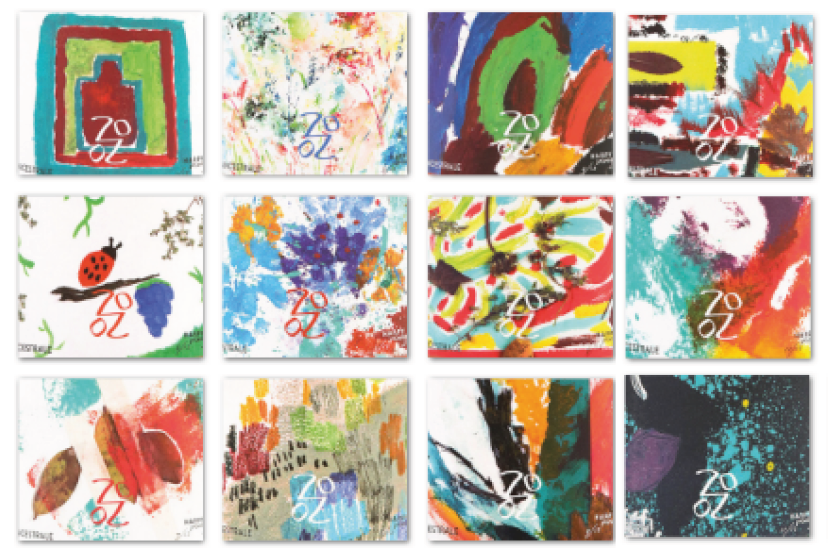
Shumi Winery – A Georgian Gem
Shumi Winery, one of Georgia’s most renowned wine producers, is nestled in the scenic village of Tsinandali in the heart of Kakheti. Since its founding in 1997, Shumi has masterfully combined Georgia’s millennia-old winemaking heritage with cutting-edge technology and a bold, forward-thinking vision. The winery’s vineyards are located in some of the country’s most prestigious PDO zones and microzones, including Mukuzani, Napareuli, Kindzmarauli, and Tsinandali. Shumi is known for its rich selection of wines, from powerful traditional qvevri to fresh, modern styles made from autochthonous Georgian grape varieties.
Shumi has numerous accolades – particularly within the Wine Travel Awards. In fact, the winery has been a consistent winner across all four seasons of the WTA. And while we’ll admit a certain fondness for this remarkable producer (we’ve had the pleasure of visiting more than once), their repeated wins are far from biased. Quite the opposite: each award is decided by different respected judges, and each time, Shumi stands out on its own merit.
The 2024–2025 WTA season was no exception – Shumi Winery proudly won in three categories, and got a well-earned recognition of its excellence across wine tourism and production.
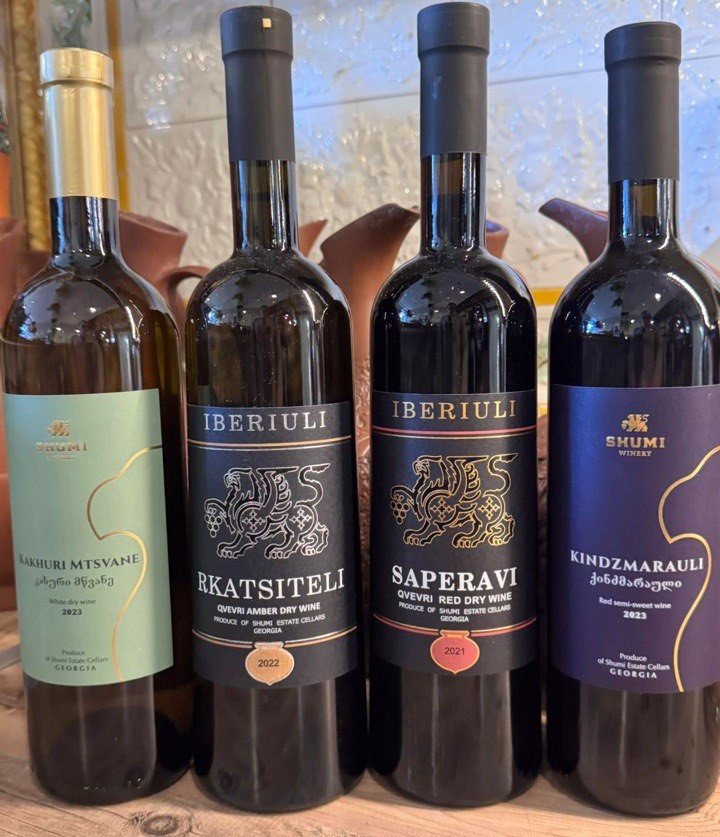
- Kakhuri Mtsvane 2023
A distinctive dry white wine, ideal for those seeking something both tasty and unusual. Fermented and aged in a qvevri.
- Grape: Mtsvane Kakhuri (100%)
- Сolor: Straw yellow
- Aroma: This dry white wine gives generously quince, apple, pear and citrus notes shine through
- Palate: Harmonious, combining vibrant acidity with a full body and nuanced notes of fresh white fruit.
- Alcohol: %: 13
- Kindzmarauli 2023
A red natural semi-sweet wine with no added sugar, crafted from grapes harvested at a natural sugar content exceeding 22%. It features a silky-smooth structure and a well-balanced, naturally sweet profile.
- Grape: Saperavi (100%)
- Сolor: Deep pomegranate
- Aroma: This late-picked Saperavi from Kindzmarauli micro-zone offers an exceptional bouquet of naturally semi-sweet notes with the typical Saperavi taste of ripe fruits.
- Palate: ripe candied fruits taste and a velvety structure
- Alcohol: 11%
- Iberiuli Rkatsiteli Qvevri 2022
An elegant dry amber wine made from the Georgian Rkatsiteli grape, carefully selected from the prestigious Napareuli microzone. Following fermentation, the wine remains on the skins in qvevri for 4–6 months, before aging for an additional six months in French oak barrels.
- Grape: Rkatsiteli (100%)
- Сolor: Reveals a splendid amber color, clear and bright, the result of maceration on the skins
- Aroma: Its aromatic profile is intense, complex and elegant with notes of honey, dried fruit, pear, and quince.
- Palate: On the palate it is round and enveloping. The tannins are velvety and perfectly balanced by a subtle acidic vein that refreshes the palate. Good structure and a long and persistent finish.
- Alcohol: 13.5%
- Iberiuli Saperavi Qvevri 2021
A dry red wine crafted from carefully selected Saperavi grapes, produced using traditional Kakhetian winemaking techniques in qvevri. After the wine is aged in French oak barrels.
- Grape: Saperavi (100%)
- Сolor: Dark Ruby
- Aroma: Cherries, berries, spices and violets
- Palate: It is full bodied and has a perfectly balanced taste with soft, velvety tannins and a pleasant long aftertaste
- Alcohol: 12.5%
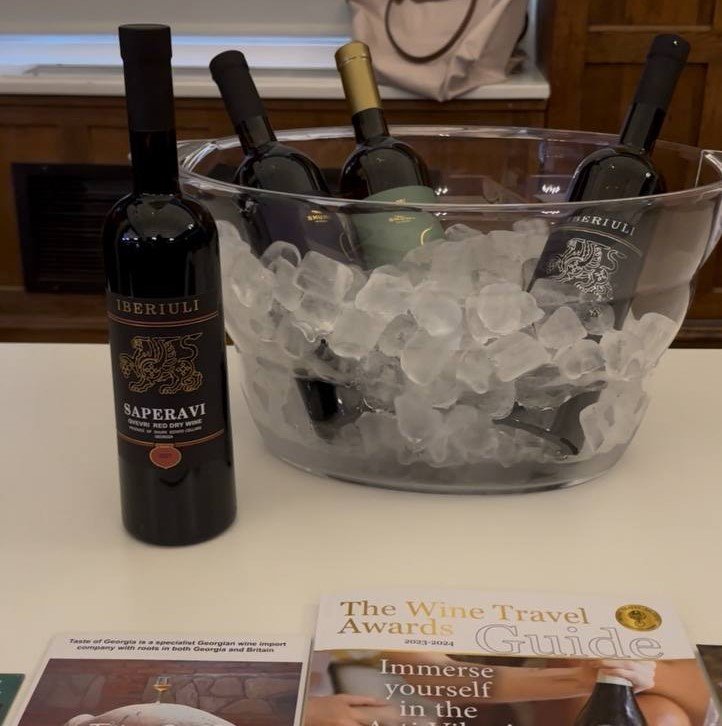
K’AVSHIRI, Georgia: A Visionary Union for Exelence in Wine
K’AVSHIRI is a groundbreaking Georgian wine project created by renowned wine experts Robert Joseph and Vladimir Kublashvili of Winery Khareba. The project’s mission is to unite centuries-old Georgian winemaking traditions with modern techniques. They specialize in crafting highly complex assemblages of red, white, and rosé wines, blending indigenous grape varieties from various Georgian regions to create unique, expressive, and finely balanced profiles.
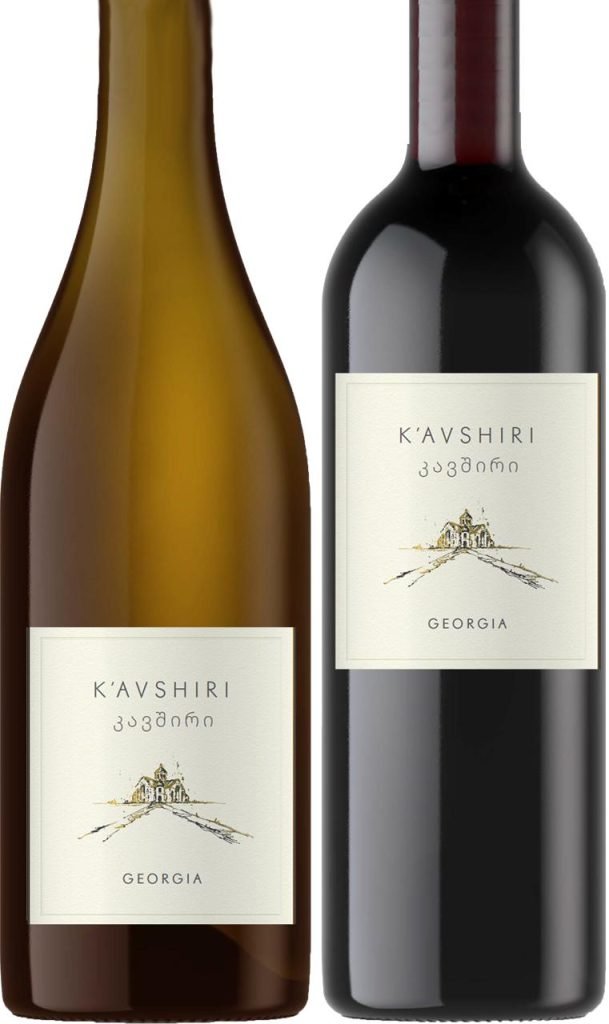
- K’AVSHIRI Red 2022 Assemblage
This elegant, deep-red wine is a stylish and ultra-complex blend, embodying the essence of innovation in Georgian winemaking. It brings together autochthonous grapes from multiple regions – Kakheti, Imereti, Samegrelo, and Racha. Two Georgian white grape varieties are co-fermented with Saperavi, meanwhile, a portion of rare Aladasturi grapes carefully dried for 10 days before fermentation.
The name K’AVSHIRI, meaning “union” in Georgian, reflects the wine’s philosophy: a harmonious convergence of grape varieties, regions, and even vintages into one bold, dynamic blend. The result is a wine that is not only deeply rooted in Georgia’s winemaking heritage but also forward-looking in its technique and expression.
- Grapes: Saperavi, Ojaleshi, Aladasturi, Otskhanuri Sapere, Merlot, Rkatsiteli, Mtsvane
- Сolor: Deep red
- Aroma: Stylish wine has aromas of plums, cherries and wild berries, with the faintest hint of oak and violets
- Palate: On the palate, the flavours are similar, combining rich, dark berries with bright red cherries and subtle spices, with just a little vanilla. The tannins are present, but polished, and the flavour is very persistent.
- Alcohol: 13%
- K’AVSHIRI White 2023 Assemblage
A unique dry wine crafted as a complex blend. Its production involves a combination of techniques: qvevri (11.7%) – fermented in traditional Georgian clay amphorae, contributing distinctive tannic structure and texture; stainless steel – preserves the wine’s purity, freshness, and vibrant fruit character; French oak barrels (10%) – aged in second-use barrels, imparting delicate notes of oak without overpowering the wine’s natural expression.
- Grapes: Mtsvane, Rkatsiteli, Rkatsiteli Kakhuri, Krakhuna, Tsitska, Tsolikouri, Khikhvi, Aligoté, Muscat, Kisi, Mtsvivane
- Сolor: Pale straw
- Aroma: Complex, notes of peach, flowers, orange
- Palate: Fresh, rich, long-lasting, with apricot and passion fruit notes; vanilla oak hint on the background as well as a tannic hint typical for qvevri
- Alcohol: 12.5%
Monsoon Valley: A Tropical Revelation in the World of Wine
And finally – Monsoon Valley, Thailand! The unexpected highlight and perhaps the biggest sensation of the tasting. As Thailand’s leading winery, Monsoon Valley has achieved what once seemed improbable: marrying traditional winemaking techniques with the challenges of a tropical climate. Founded in 2001 near the coastal city of Hua Hin, Monsoon Valley was the first winery in Thailand to produce high-quality wines in tropical conditions. Since then, it has earned numerous international awards, becoming a symbol of Thai winemaking excellence and redefining perceptions of Southeast Asian wine. Monsoon Valley offers three distinct lines of wines, each reflecting a different expression of their unique terroir: Classic Range – a blend of international and local grape varieties cultivated at the Hua Hin vineyard. These wines are crafted specifically to complement Thai and broader Asian cuisines, offering bright, food-friendly profiles; Premium Range – an award-winning collection made exclusively from international grape varieties. These wines are expressive, well-balanced, and showcase the winery’s technical finesse; Flagship Range – produced in limited quantities from hand-selected grapes, these wines represent the pinnacle of Monsoon Valley’s portfolio. Elegant and distinctive, they hold their own alongside some of the most prestigious appellations from both the Old and New World.
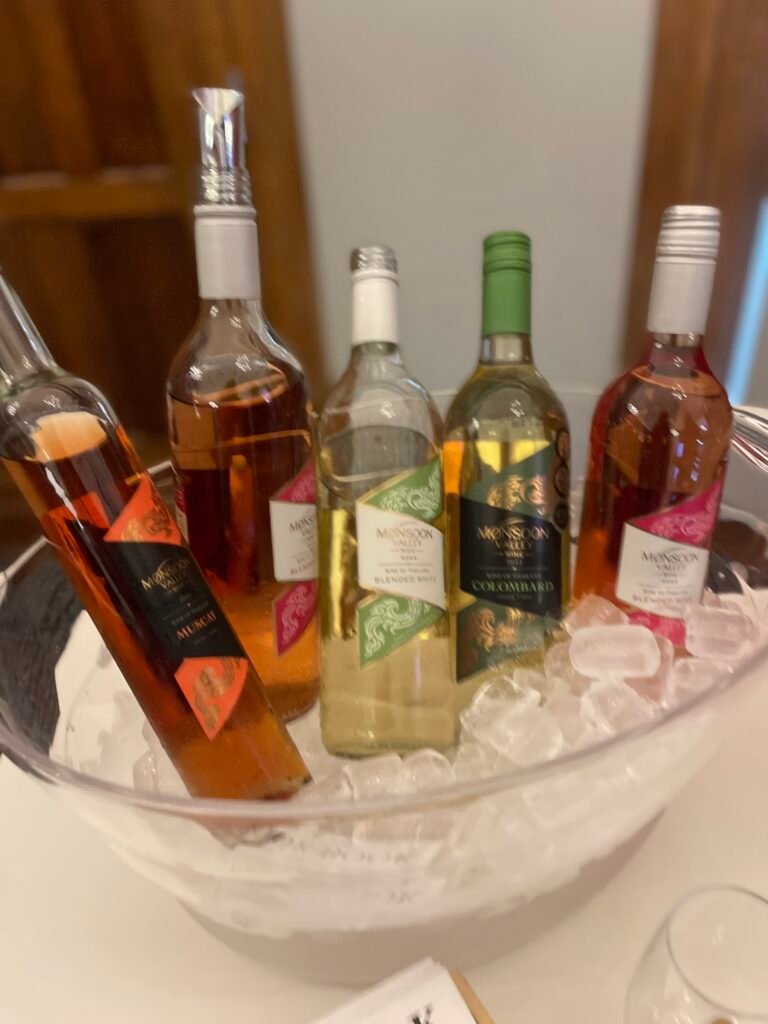
- Classic Range – Blended White
A light and refreshing white wine, thoughtfully crafted to pair seamlessly with Thai and Asian cuisine. Aged exclusively in stainless steel tanks, it preserves crispness and purity of flavor. Before bottling, the wine is blended and rested for at least a month.
- Grapes: Colombard, Chenin Blanc, White Malaga
- Сolor: Pale Lemon
- Aroma: Sweet stone fruits, green mango with a hint of green tea
- Palate: Off-dry. Light and refreshing crisp fresh fruit flavours balanced by a touch of juicy sweetness with smooth finish
- Sugar level: 8 g/l residual sugar
- Alcohol: 12%
- Classic Range – Blended Rosé
A refreshing and aromatic rosé wine that combines local and international grape varieties.
- Grapes: Colombard, Chenin Blanc, White Malaga, Shiraz
- Сolor: Salmon
- Aroma: Fragrant aroma of wild red berries, strawberry, guava
- Palate: Medium-sweet. Medium bodied juicy tropical fruits with firm acidity and well-balanced sweetness
- Sugar level: 13 g/l residual sugar
- Alcohol: 12%
- Classic Range – Blended Red
A light red wine with fruity aromas.
- Grapes: Shiraz, Dornfelder, Pokdum
- Сolor: Garnet
- Aroma: Succulent plum and fresh blackcurrant flavours with earthy qualities of spicy black pepper and developing smoky aroma
- Palate: Medium bodied with soft tannins and velvety texture lingers on the palate with blackberry notes and leathery undertone
- Sugar level: 5 g/l residual sugar
- Alcohol: 13%
- Premium Range Colombard
A dry white wine made from the Colombard grape variety. Juicy and punchy flavours of well ripened gooseberry, passion fruit and a hint of green apple with refreshing acidity and a velvety dry finish. Perfect for hot weather.
- Grape: Colombard
- Сolor: Lemon Gold
- Aroma: Lifted nose of well ripened gooseberry with a hint of green apple and passion fruit
- Palate: Light and crisp mellow in tannins with lively, refreshing acidity and velvety dry finish
- Sugar level: 4 g/l residual sugar
- Alcohol: 12.5%
- Premium Range Shiraz Rosé
This is a blend of rosé wine obtained using two winemaking techniques: direct pressing and maceration on the skins. It offers an array of sweet red berry notes with subtle rose petal flavours, complemented by a fine acidity.
- Grape: Shiraz
- Сolor: Medium Salmon
- Aroma: An intriguing aroma of wild strawberry, red berries and confectionary with a touch of spices
- Palate: Fresh palate and up-lifted fruit, smooth acidity, round and good weight on the palate, long finish with some tannin structure
- Sugar level: 5 g/l residual sugar
- Alcohol: 12%
- Premium Range Shiraz
A dry red wine made from the Shiraz grape variety. It has a rich taste and aroma, making it a great choice for lovers of full-bodied wines.
- Grape: Shiraz
- Сolor: Dark ruby red, purple hue
- Aroma: Ripe nose of plum and wild dark berries with sweet subtle spices and toasty oak
- Palate: Medium bodied with good concentration of fruit with fine silky tannins and a seamlessly long finish softened by ageing in oak
- Sugar level: 4 g/l residual sugar
- Alcohol: 13.5%
- Flagship Range Muscat
A premium dessert wine made from Muscat Hamburg grapes. Part of the Flagship Range, this limited-edition Monsoon Valley series features wines crafted from the most flavorful, deeply colored, and sugar-rich berries. The result is a wine with a rich, elegant, and distinctive profile, offering a truly unique tasting experience.
- Grape: Muscat de Hamburg
- Сolor: Salmon with an orange hue
- Aroma: Luscious aromas of lychee and rose petal
- Palate: Tight acidity and sumptuous sweetness gives wine a lovely concentrated core. A myriad of lychee and rose petal linger with a harmonising finish
- Sugar level: 93.16 g/l residual sugar
- Alcohol: 15%
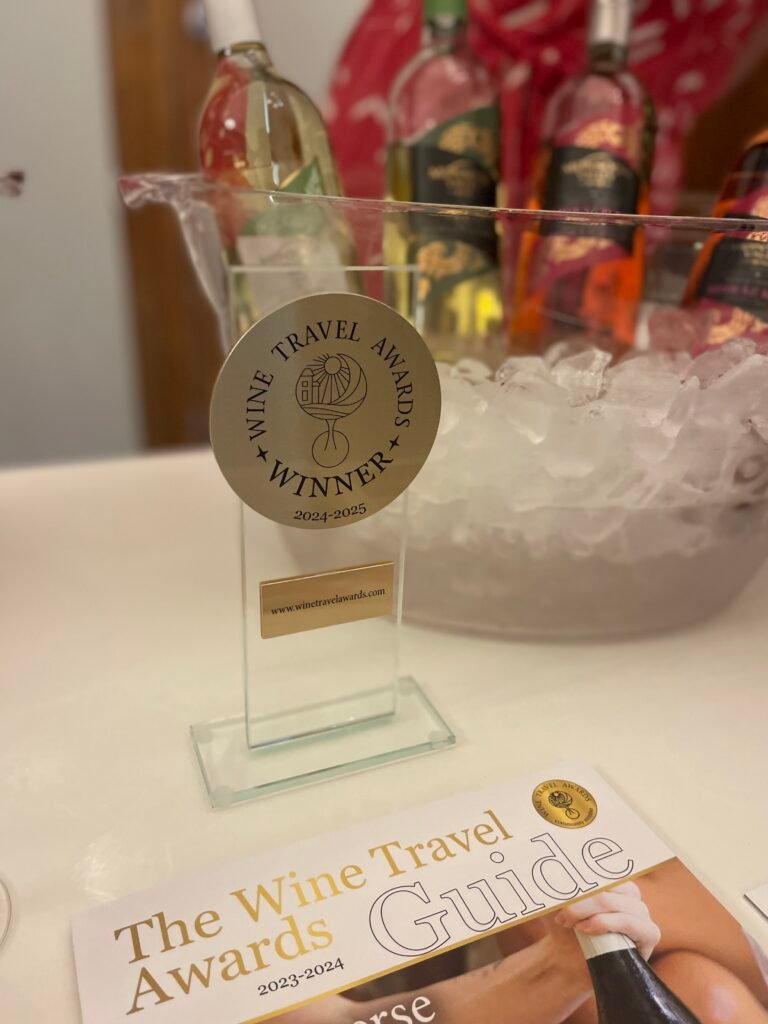
The Monsoon Valley presentation not only reaffirmed that winemaking in the challenging conditions of a tropical climate is not only possible – it’s already a proven success – but also showcased the remarkable quality Thai wines have achieved. These wines go far beyond the simple pop style often associated with exotic origins. Instead, they offer originality, vivid character, and the kind of depth and complexity found in true vinous masterpieces.
Bravo, Monsoon Valley! Your wines were a dazzling finale to this year’s Wine Travel Awards Ceremony in London – a true fireworks display of flavor, craft, and vision. Together, we now look ahead to new horizons.
Perhaps the most profound lesson wine offers us is its power to open doors to new worlds. Every tasting is more than just an experience of flavor and aroma – it is a journey, a discovery, a celebration of culture and craftsmanship. The Wine Travel Awards tasting was exactly that: a moment of shared joy, exploration, and borderless connection.
The fifth anniversary edition of the Wine Travel Awards 2025–2026 launches this fall. The new season promises reunions with last year’s inspiring winners and exciting encounters with fresh members of our growing global community. Extraordinary wineries from every corner of the world await.
Join us – let the journey continue!
⇒ Join our social networks ⇒ Optimistic D+ editors will take this as a compliment.
⇒ Every like is taken as a toast!
Each year, the Wine Travel Awards Ceremony – traditionally held during the London Wine Fair – offers far more than an awards presentation. It is a vibrant and unforgettable celebration of global wine culture, bringing together winners, industry professionals, and wine lovers from around the world. The event seamlessly blends recognition with experience, featuring not […]

